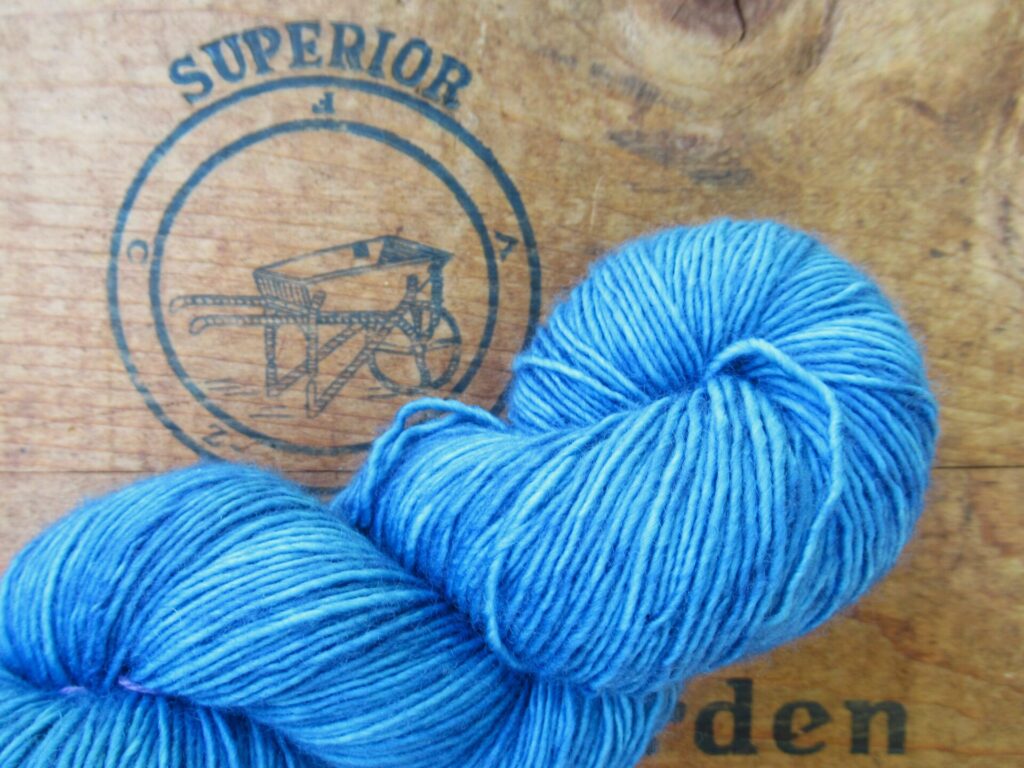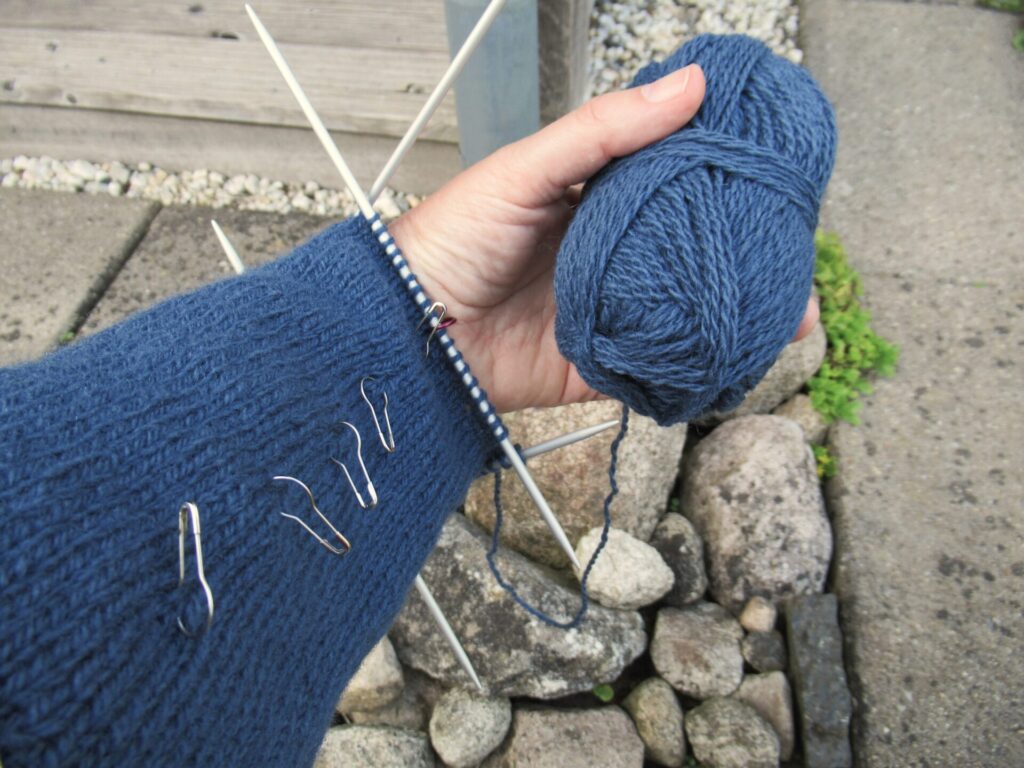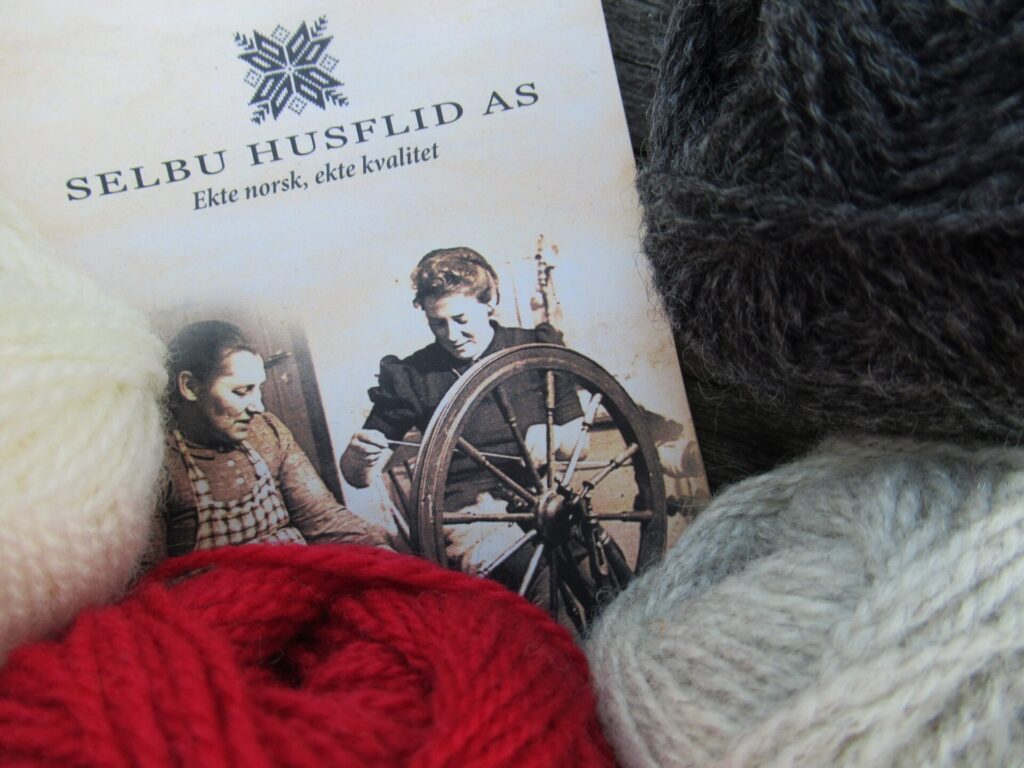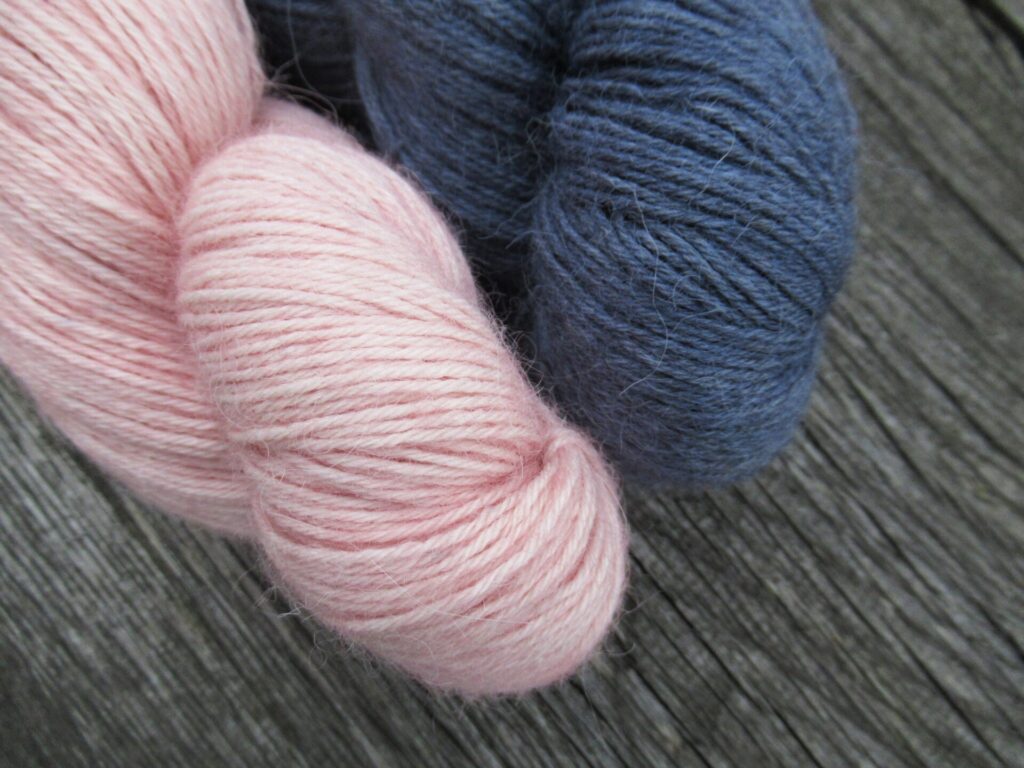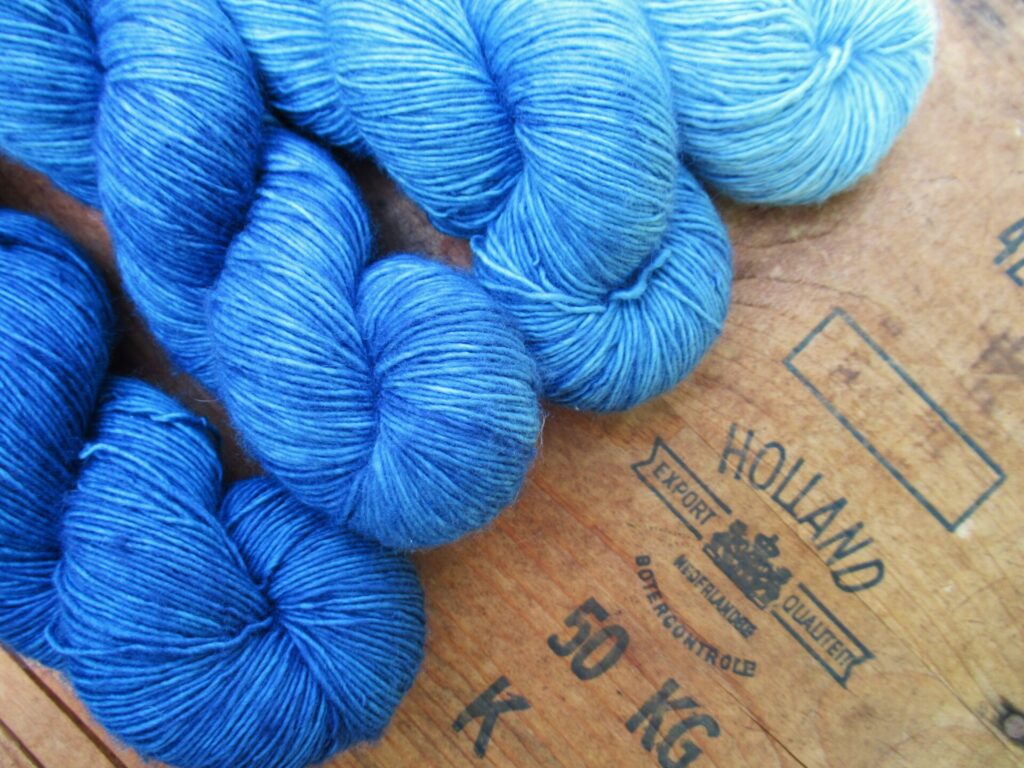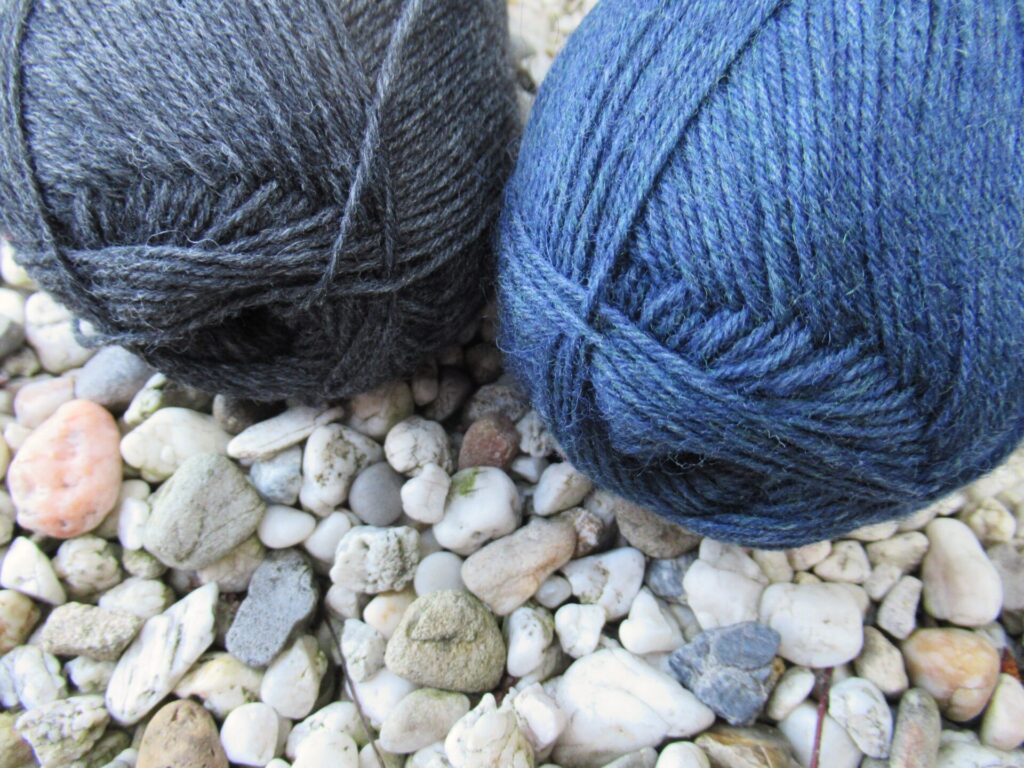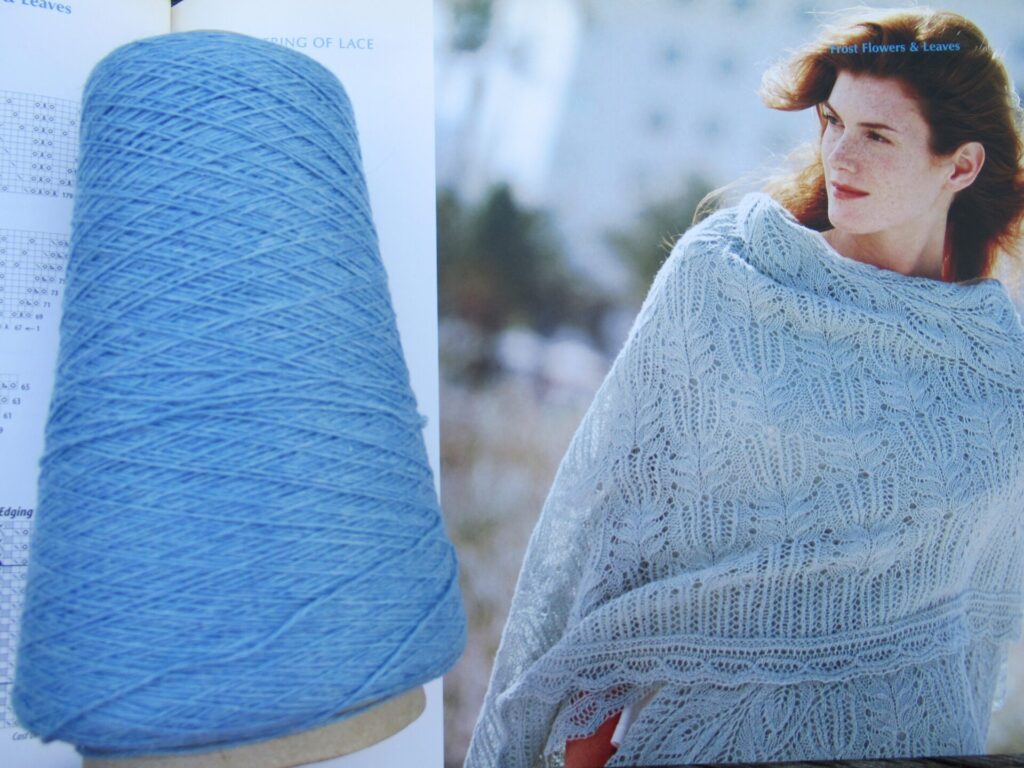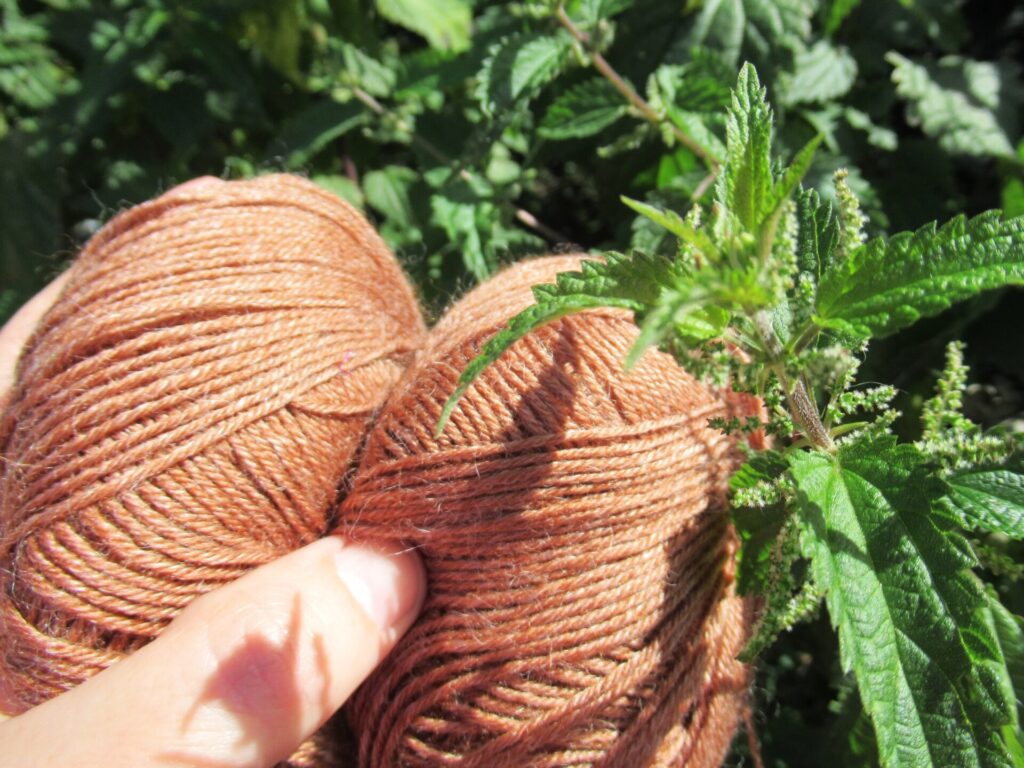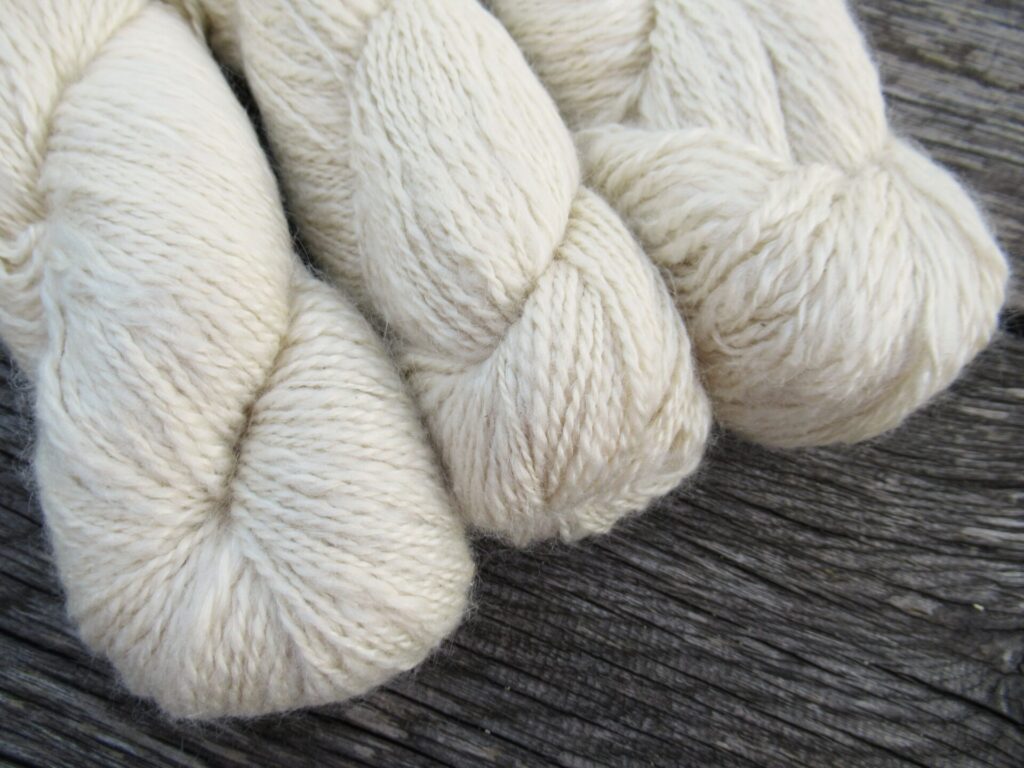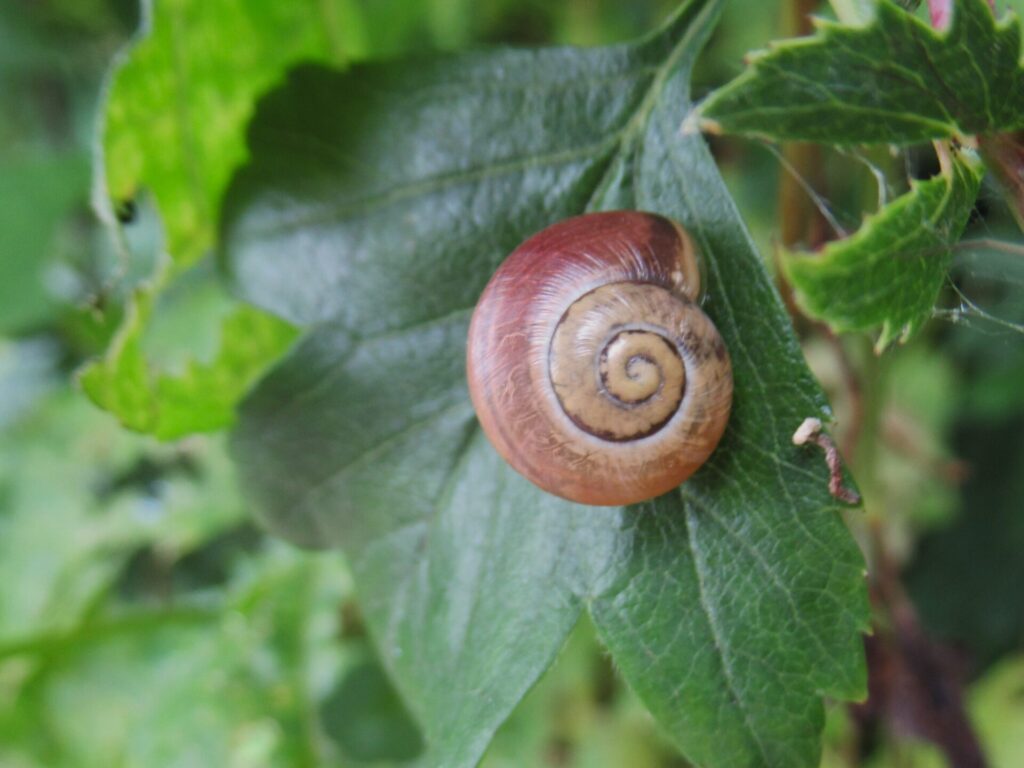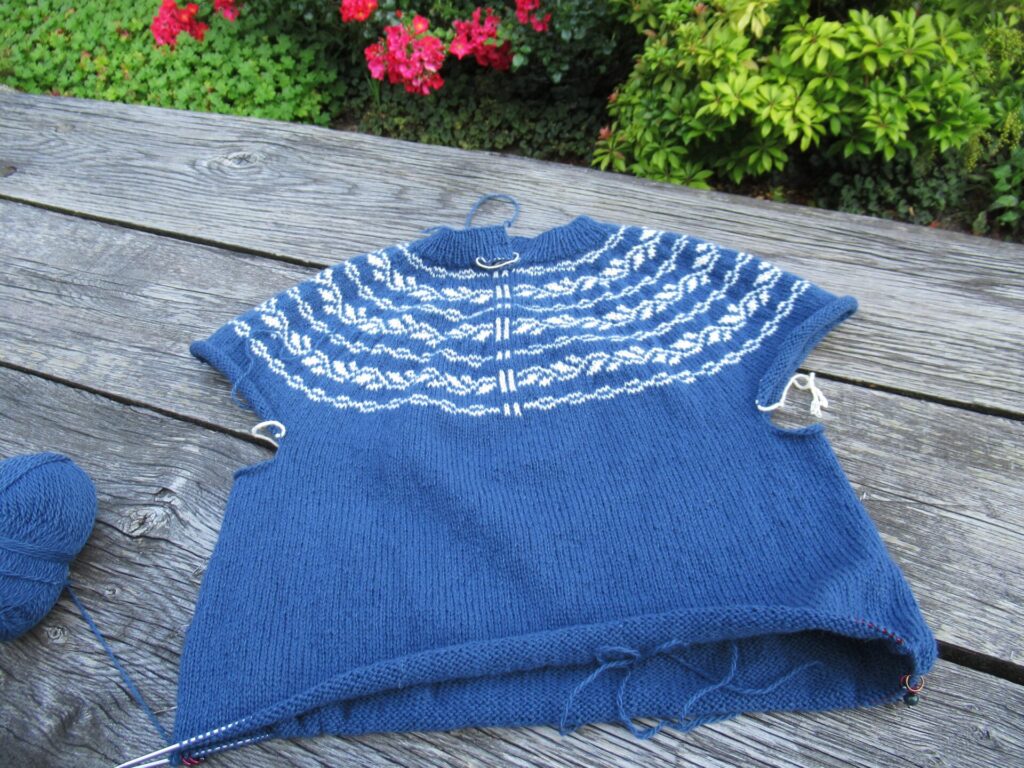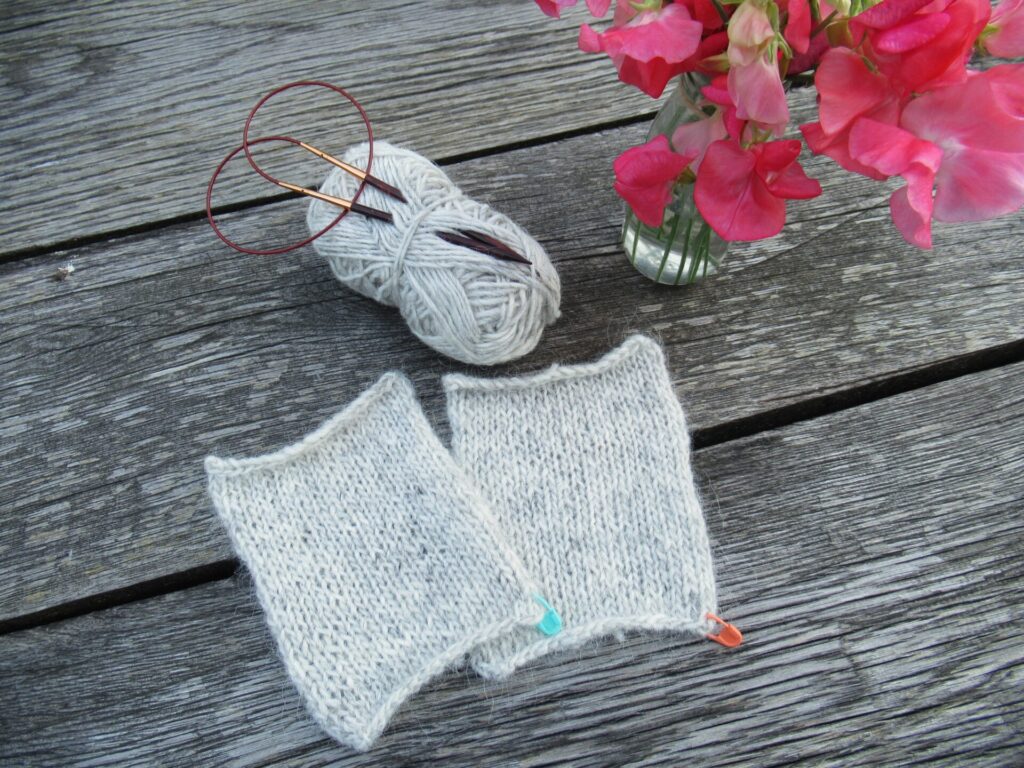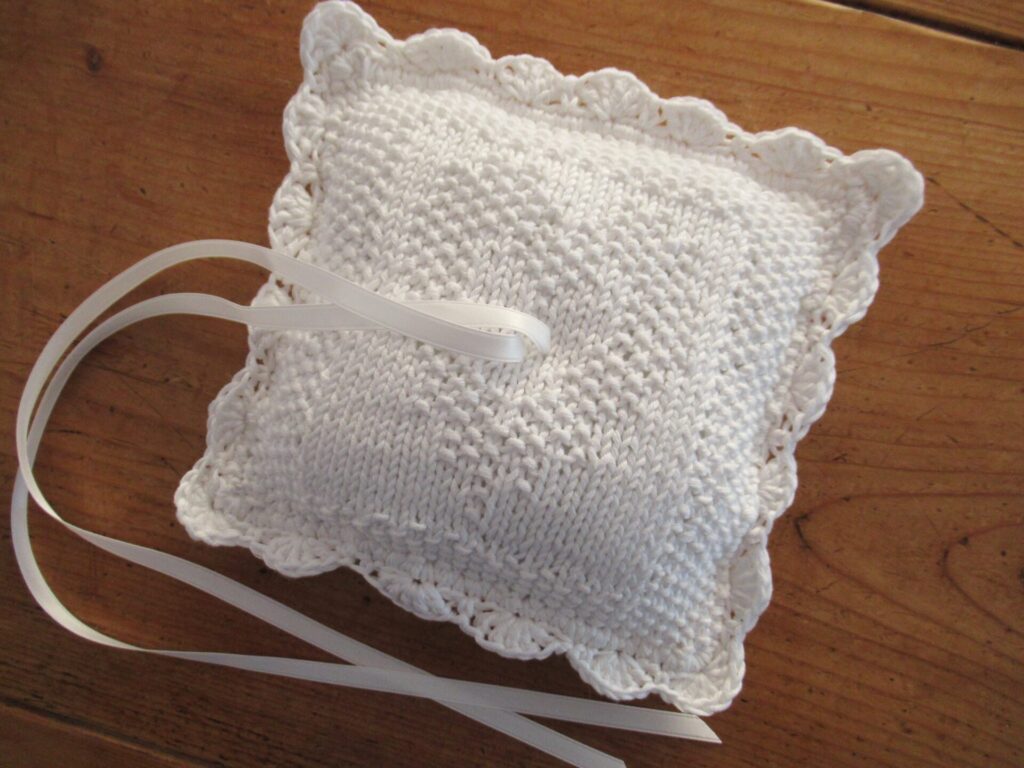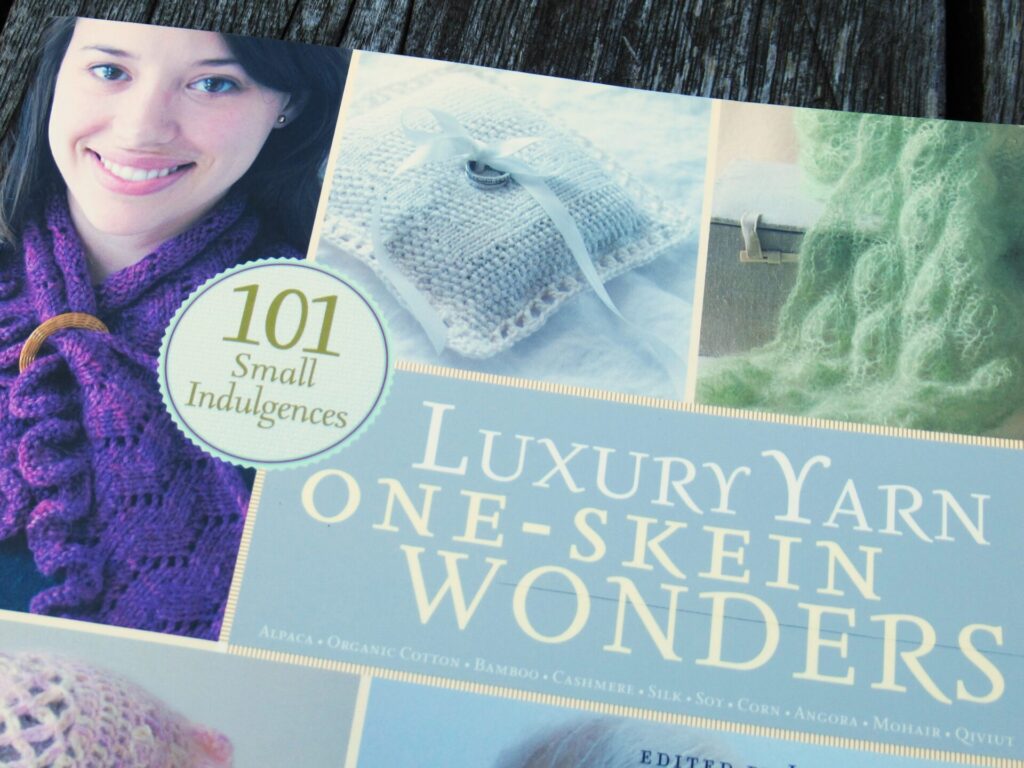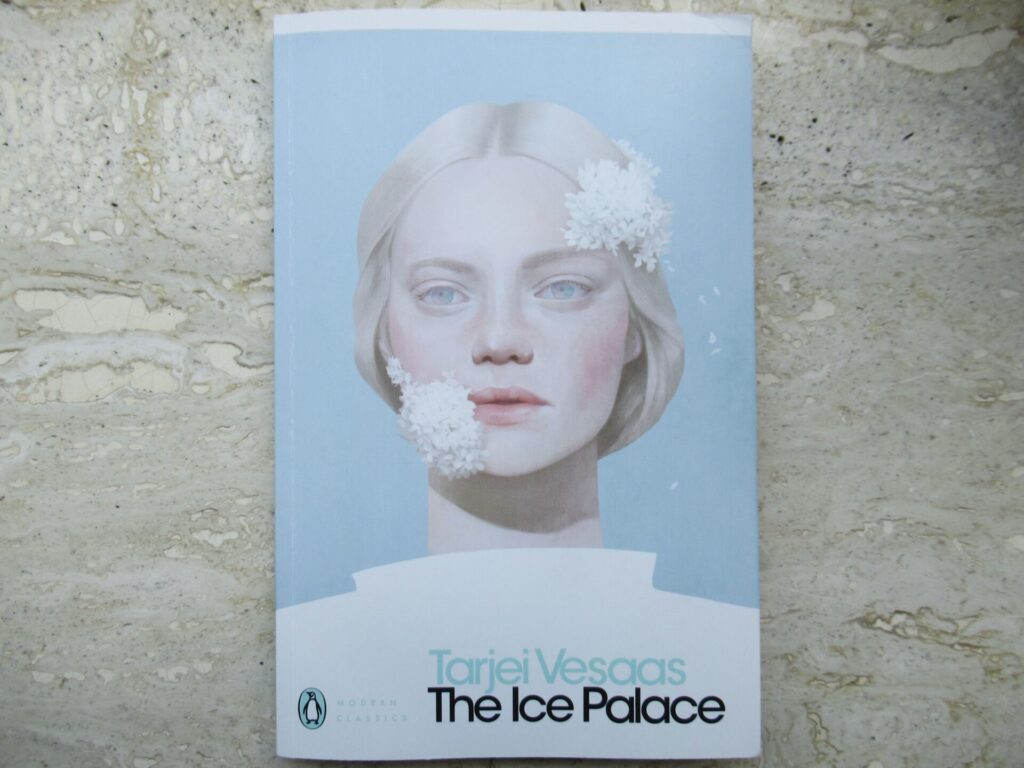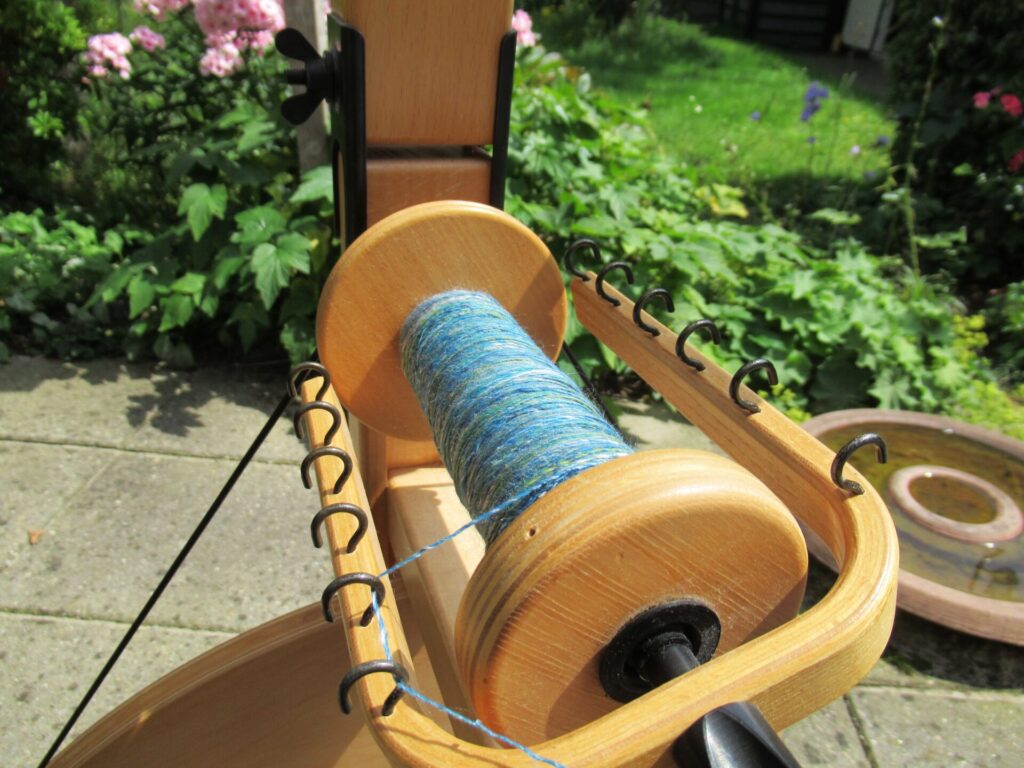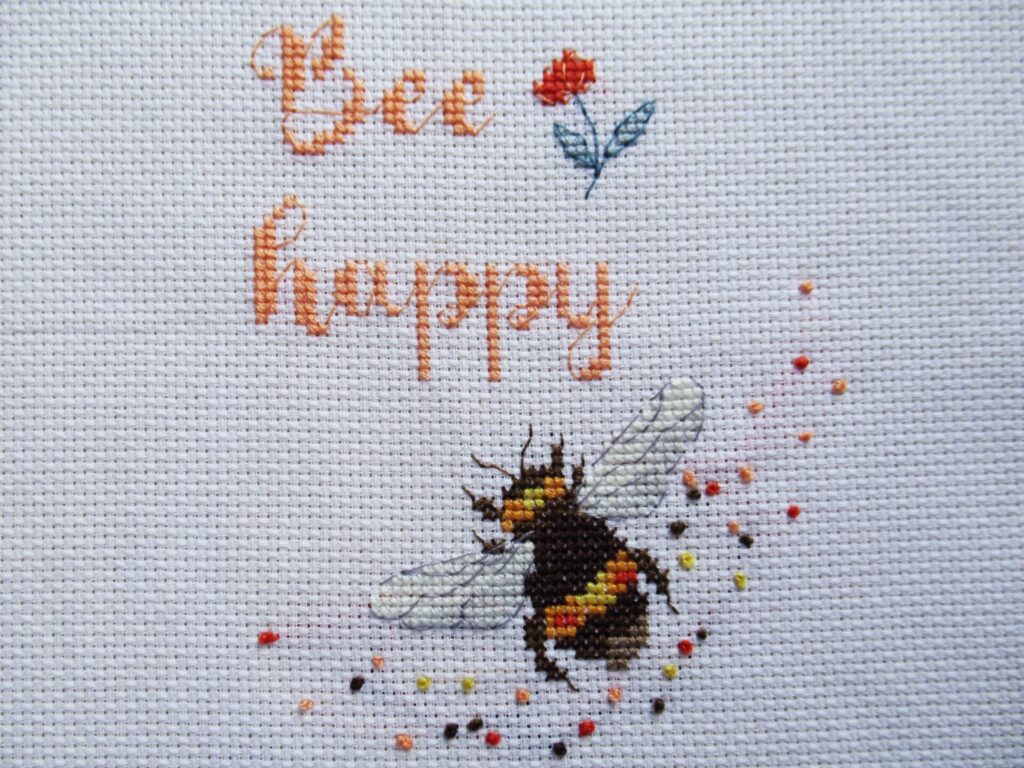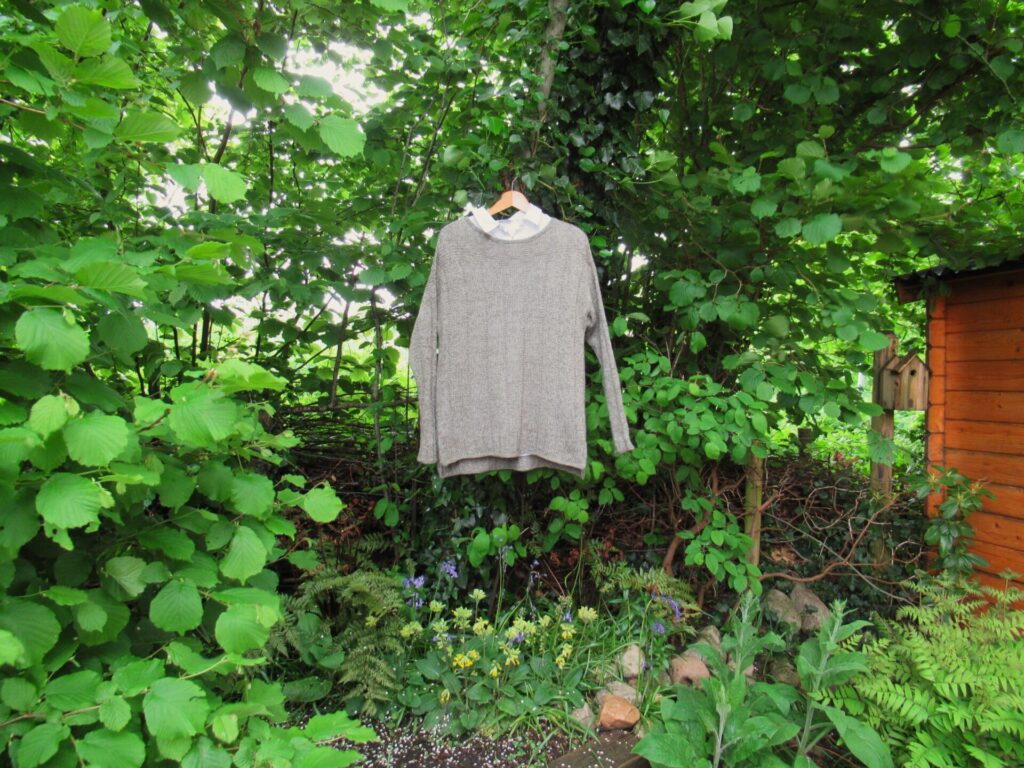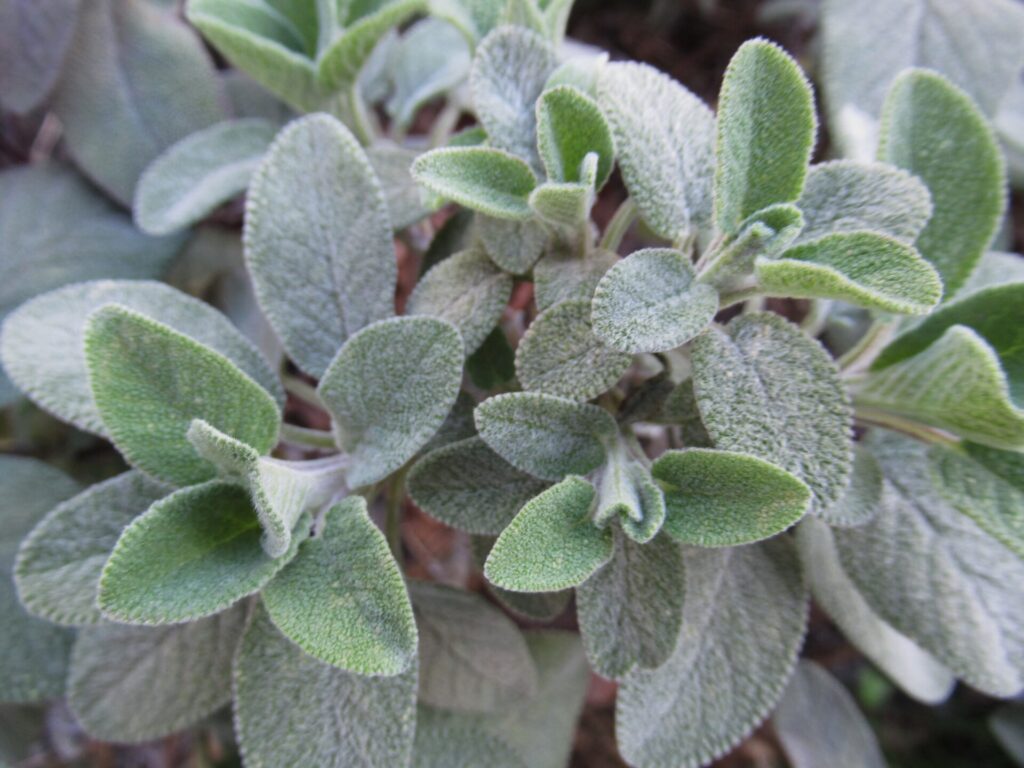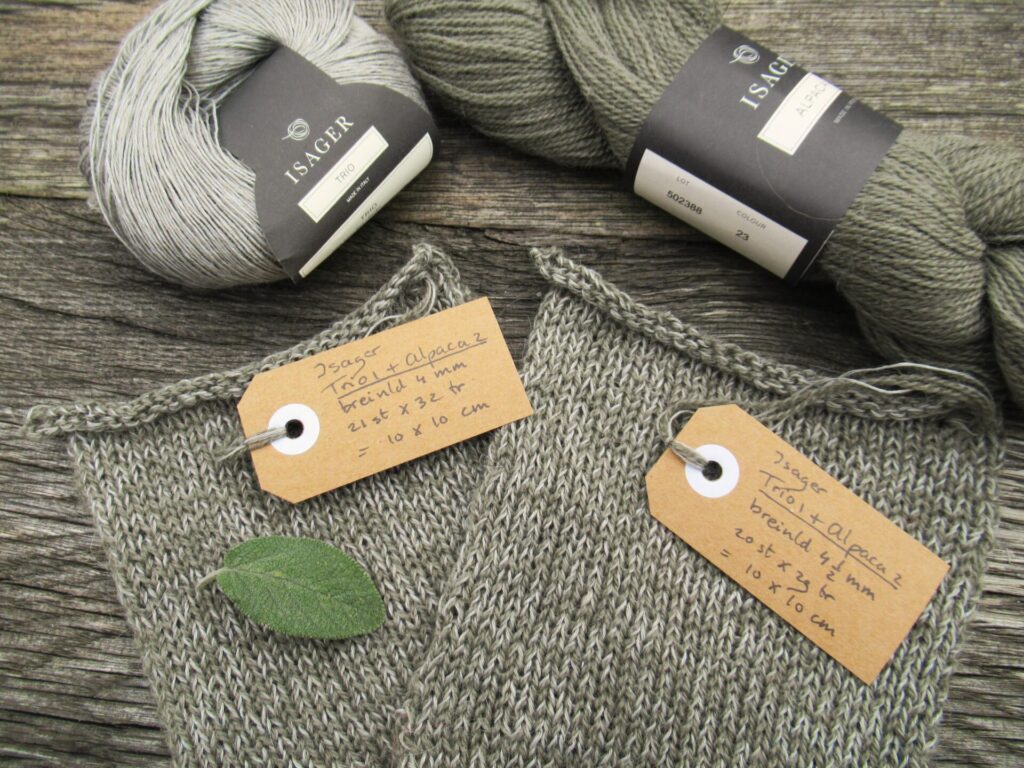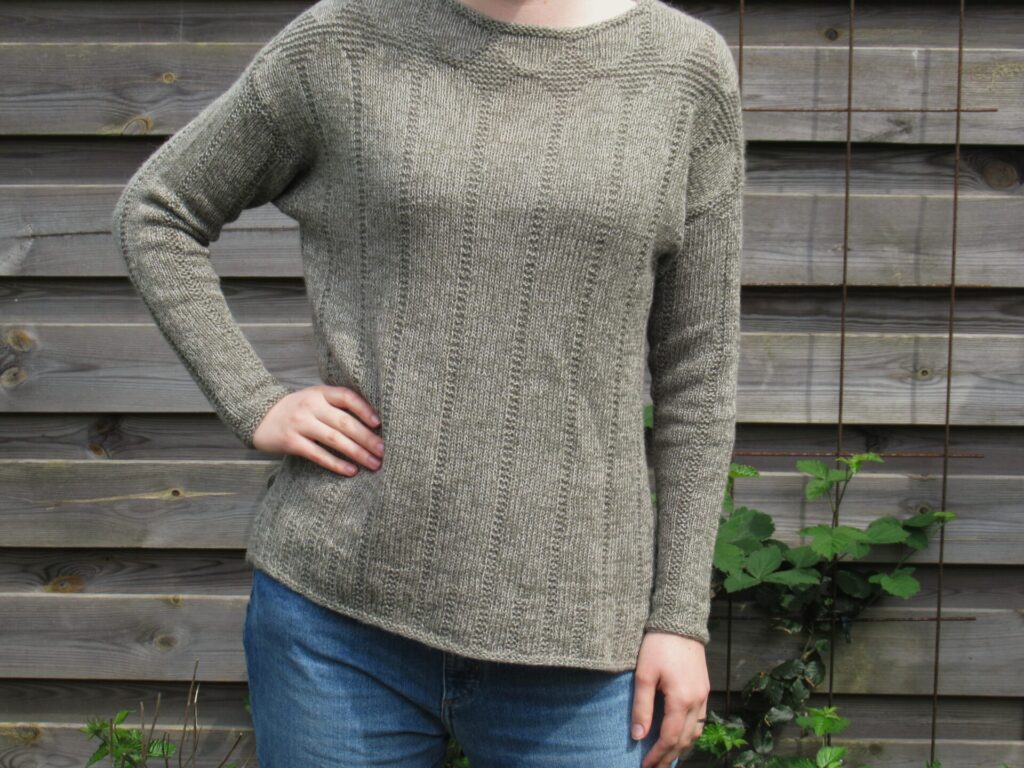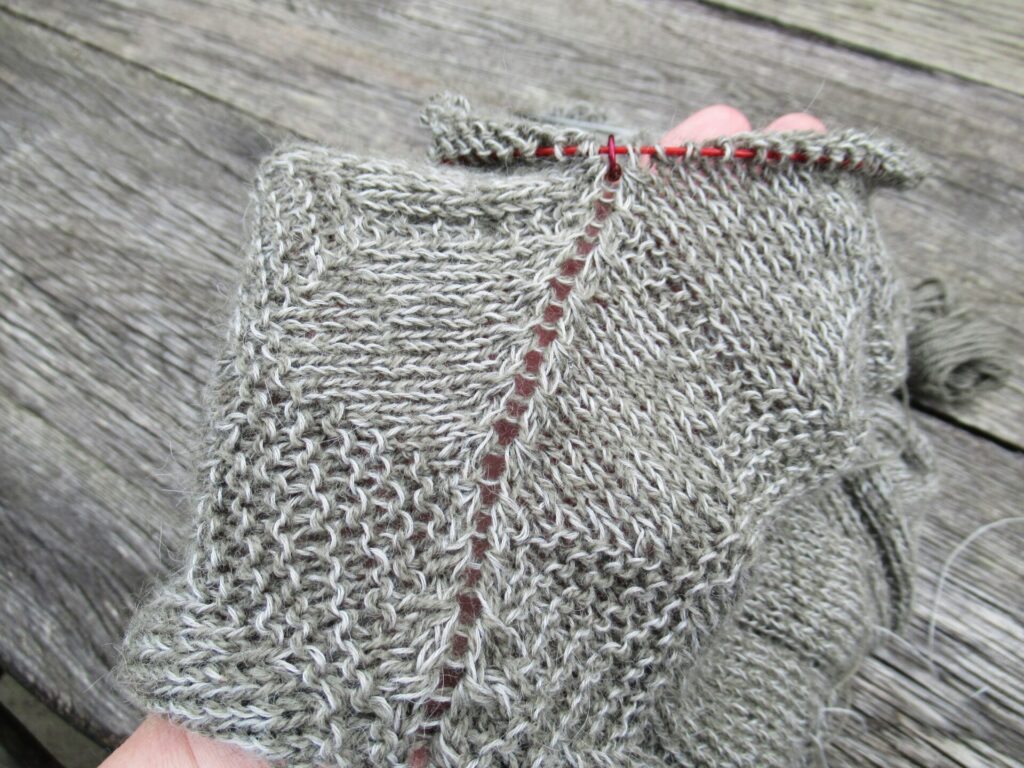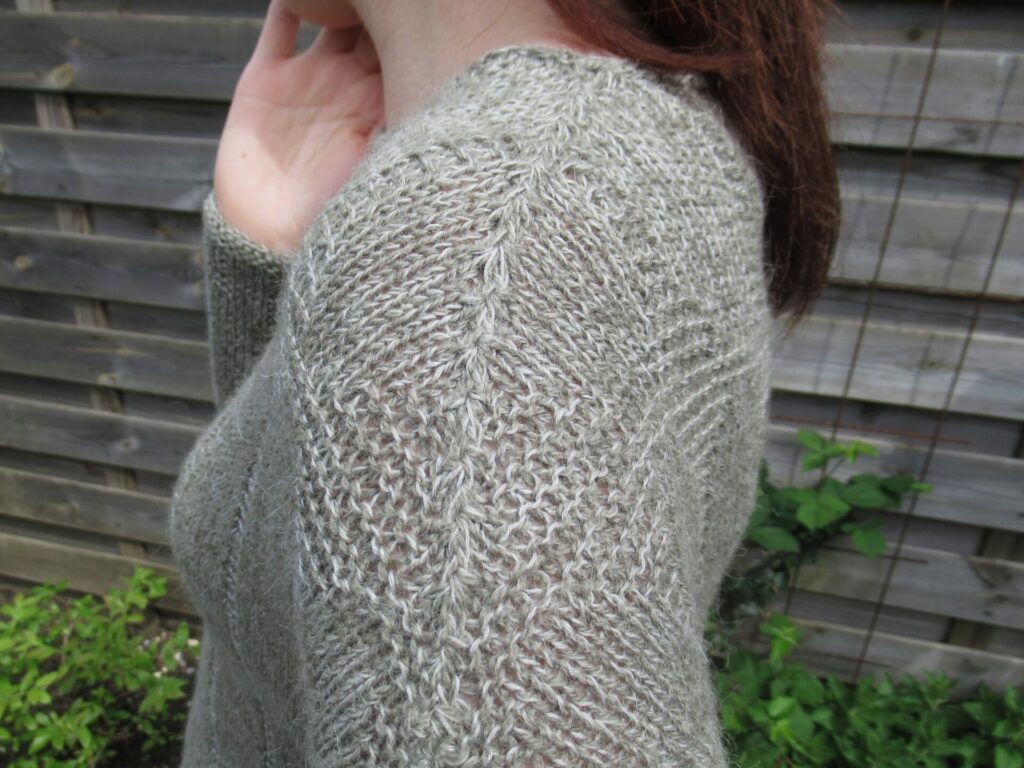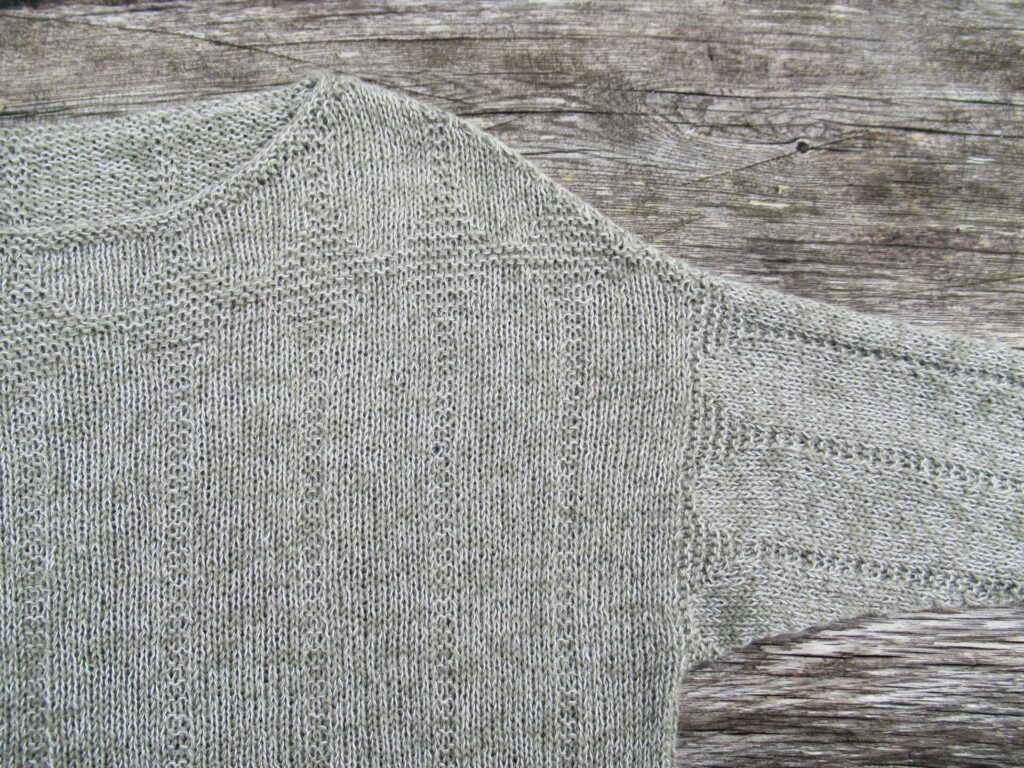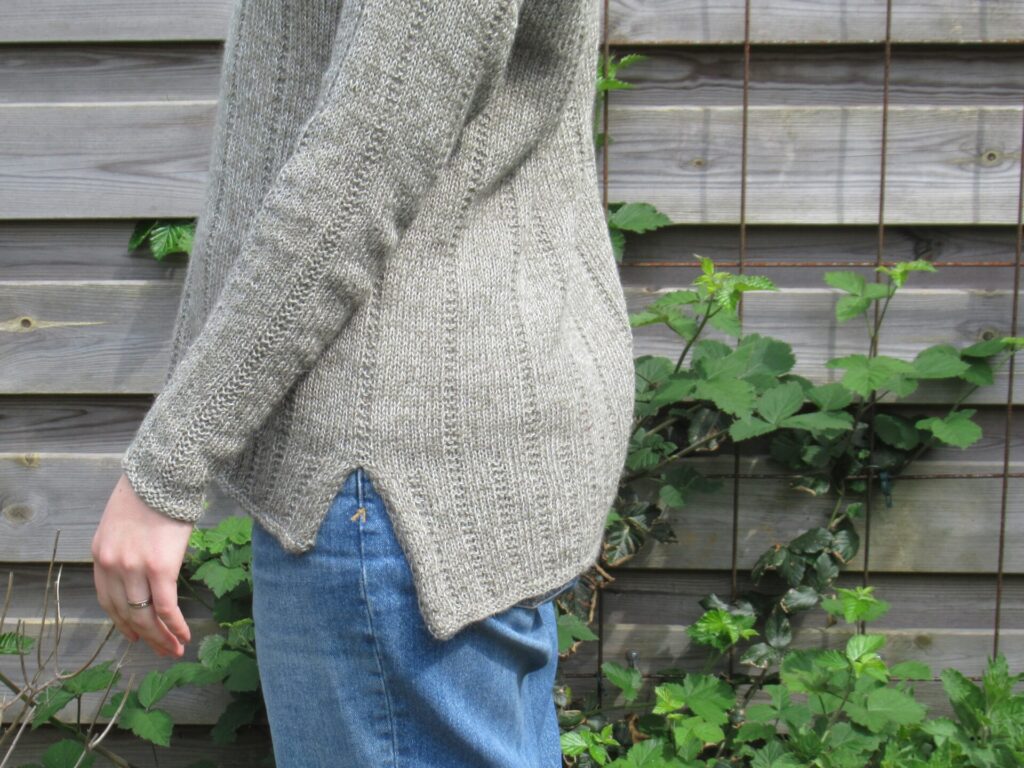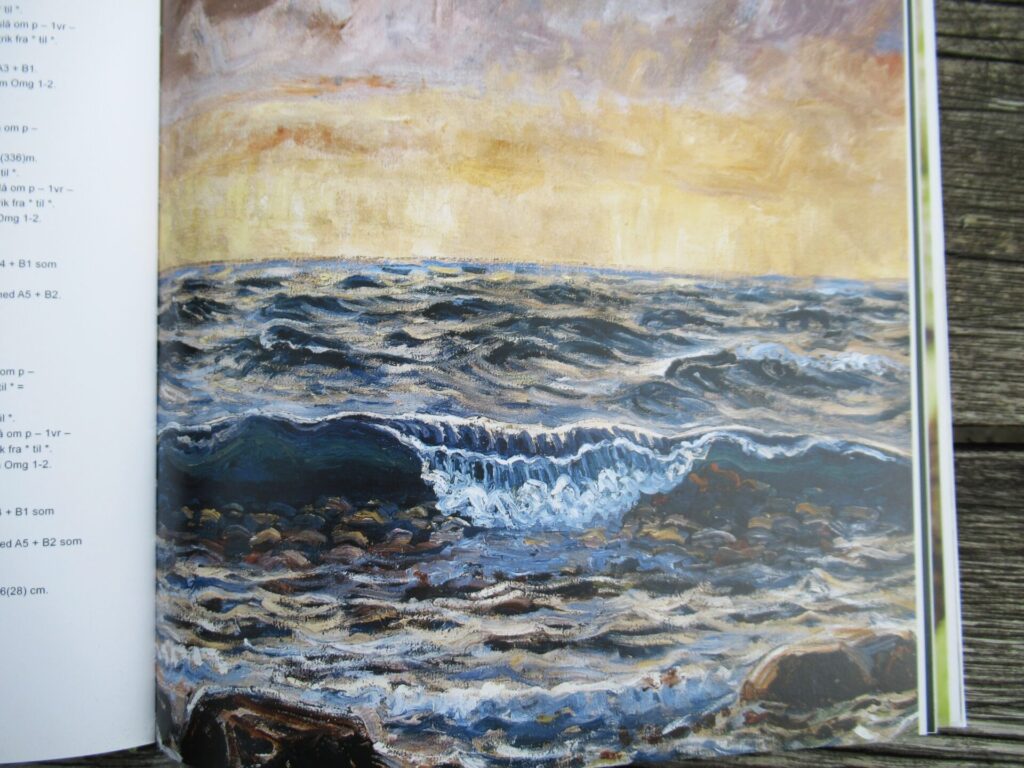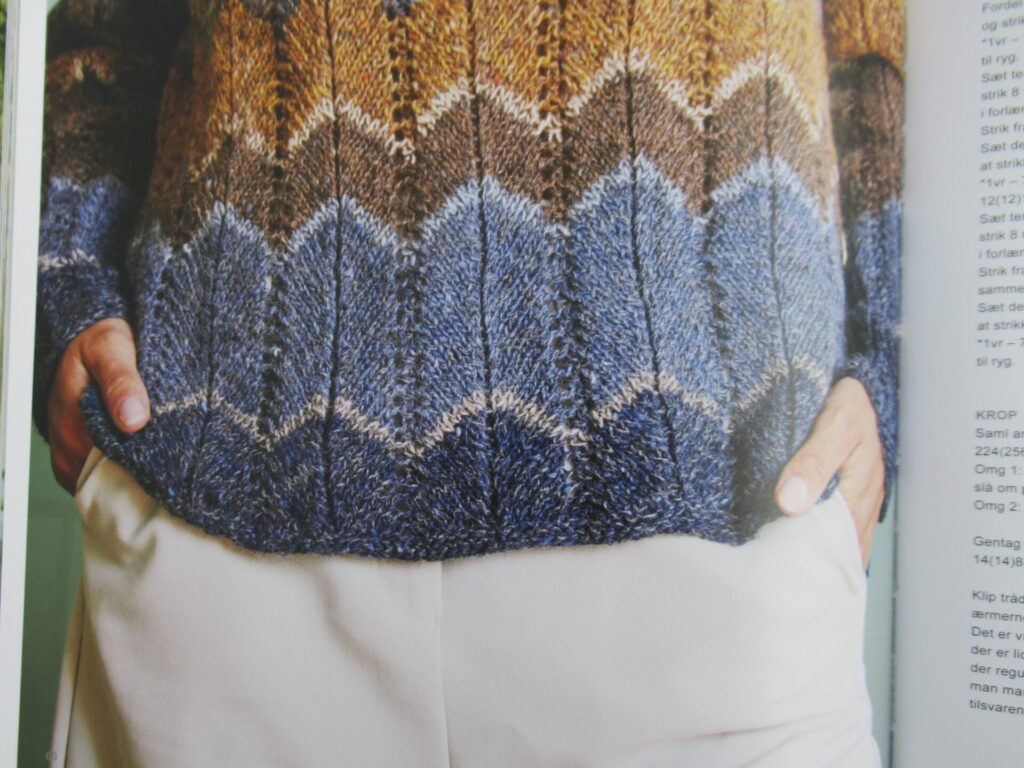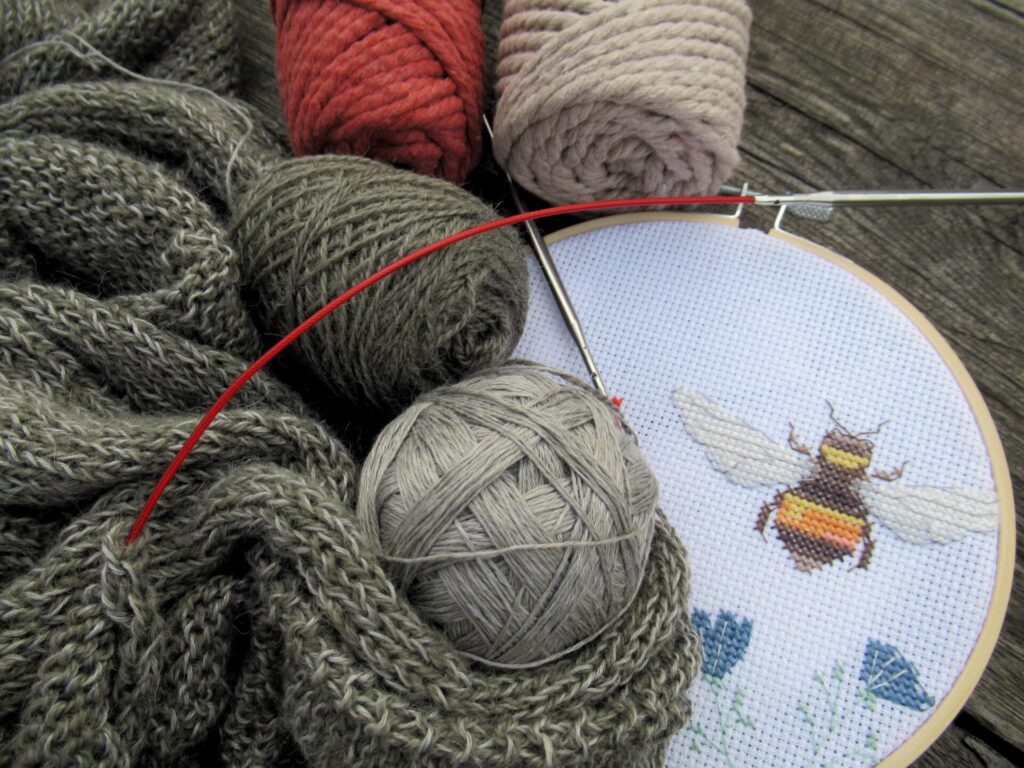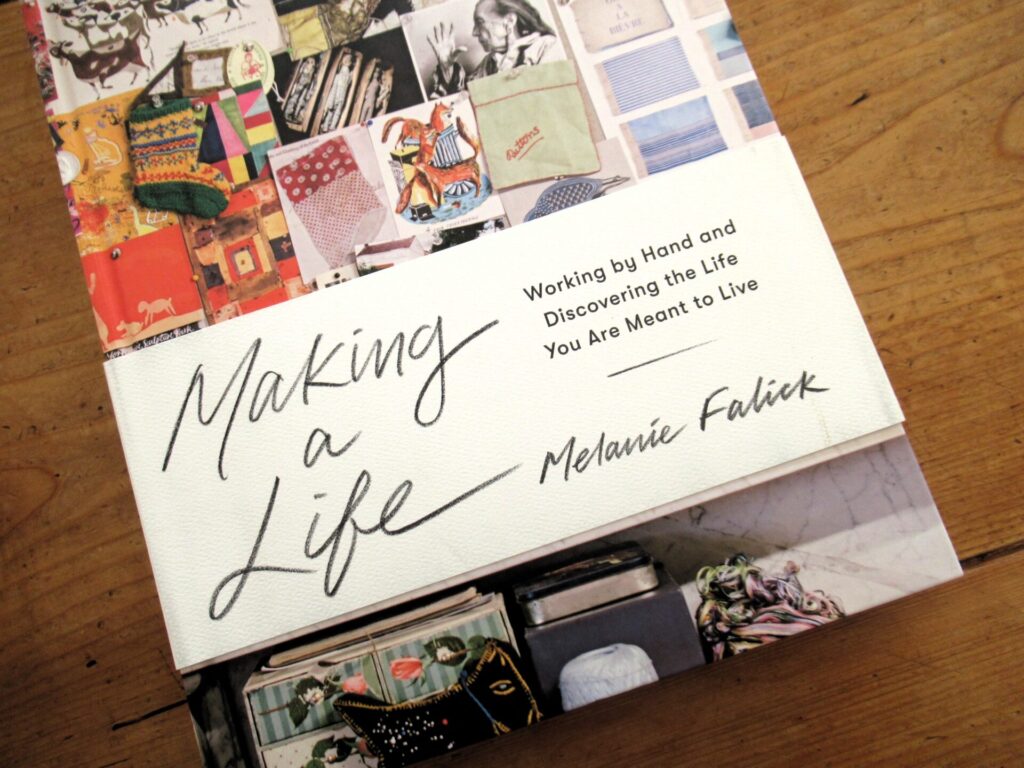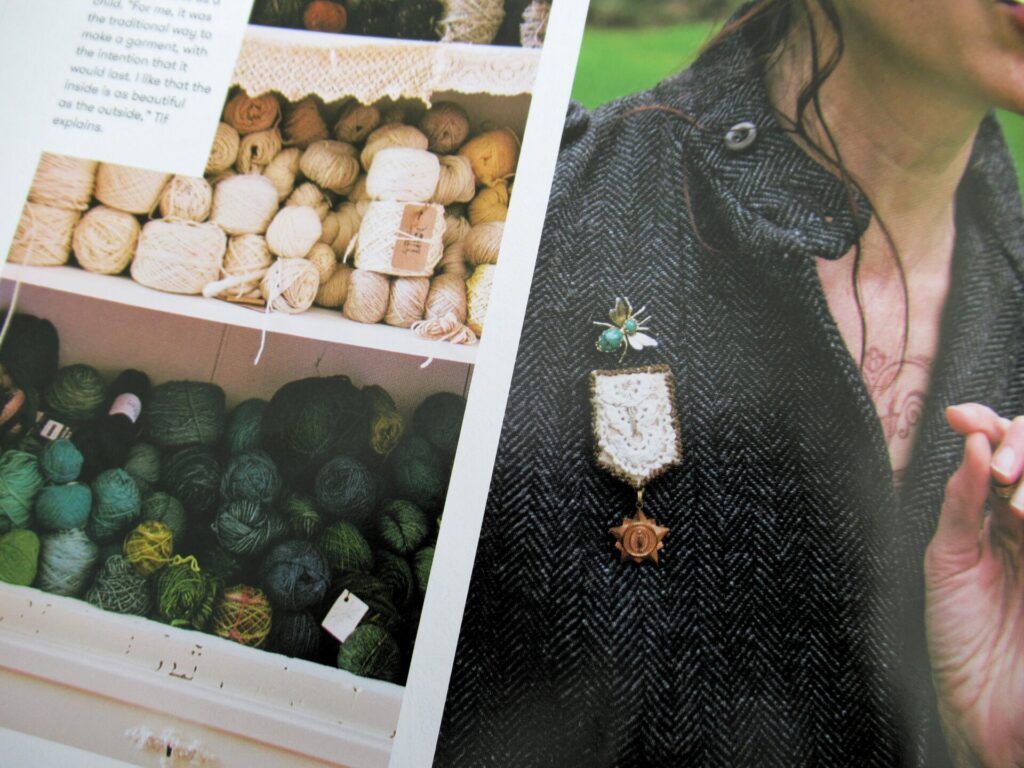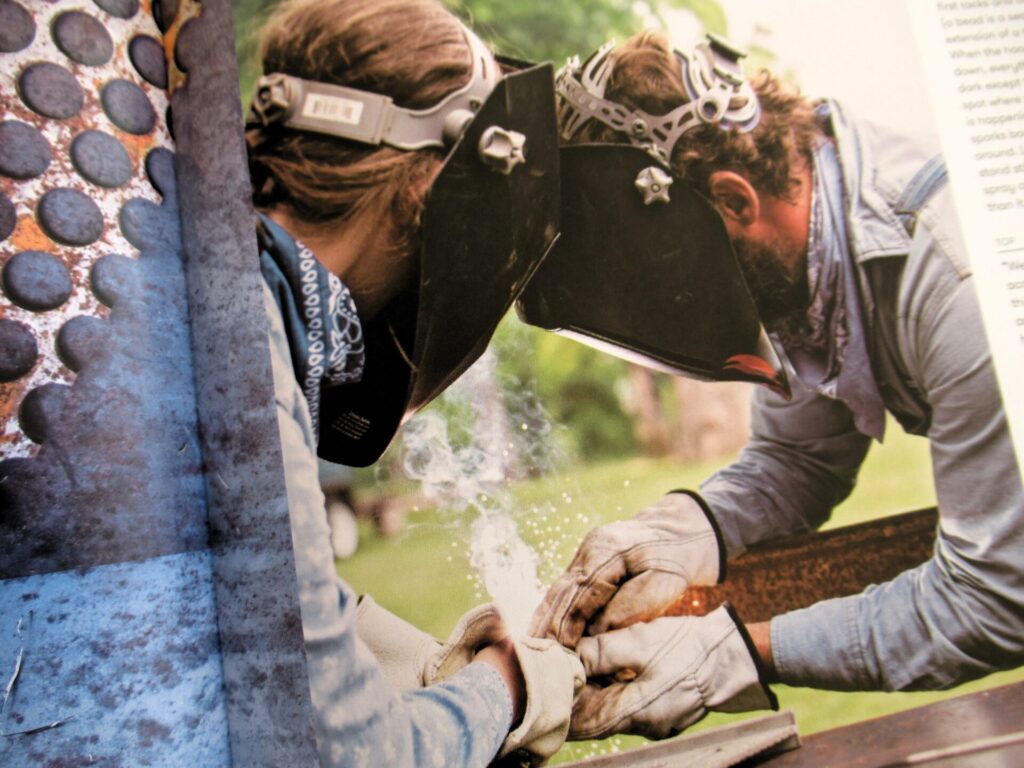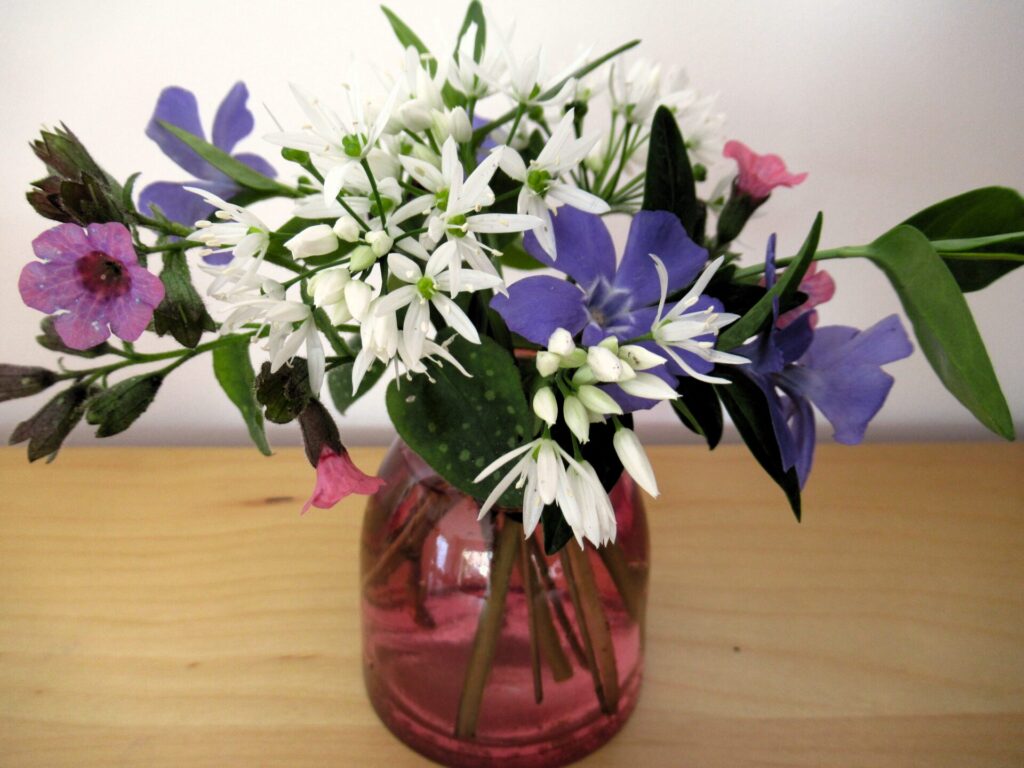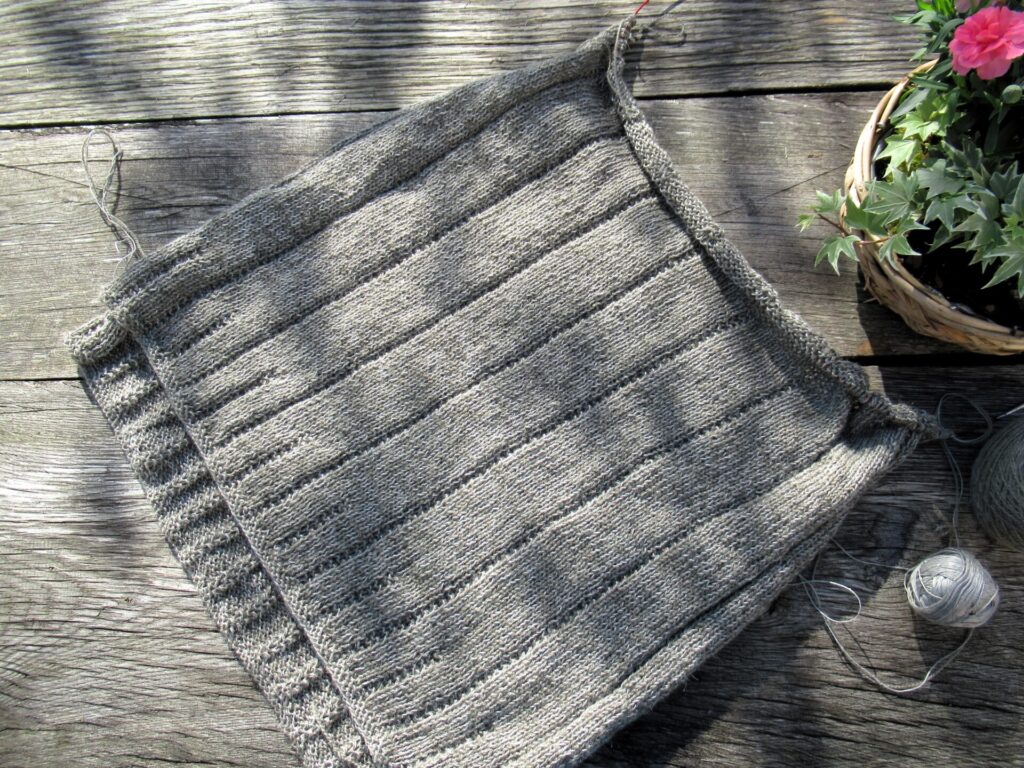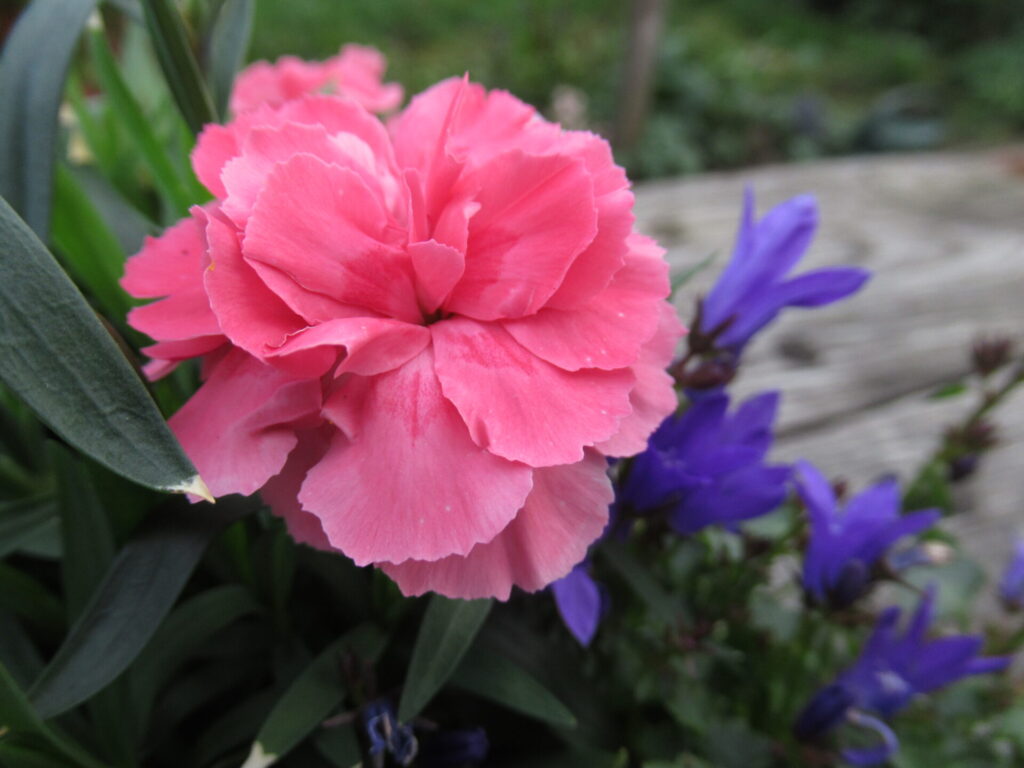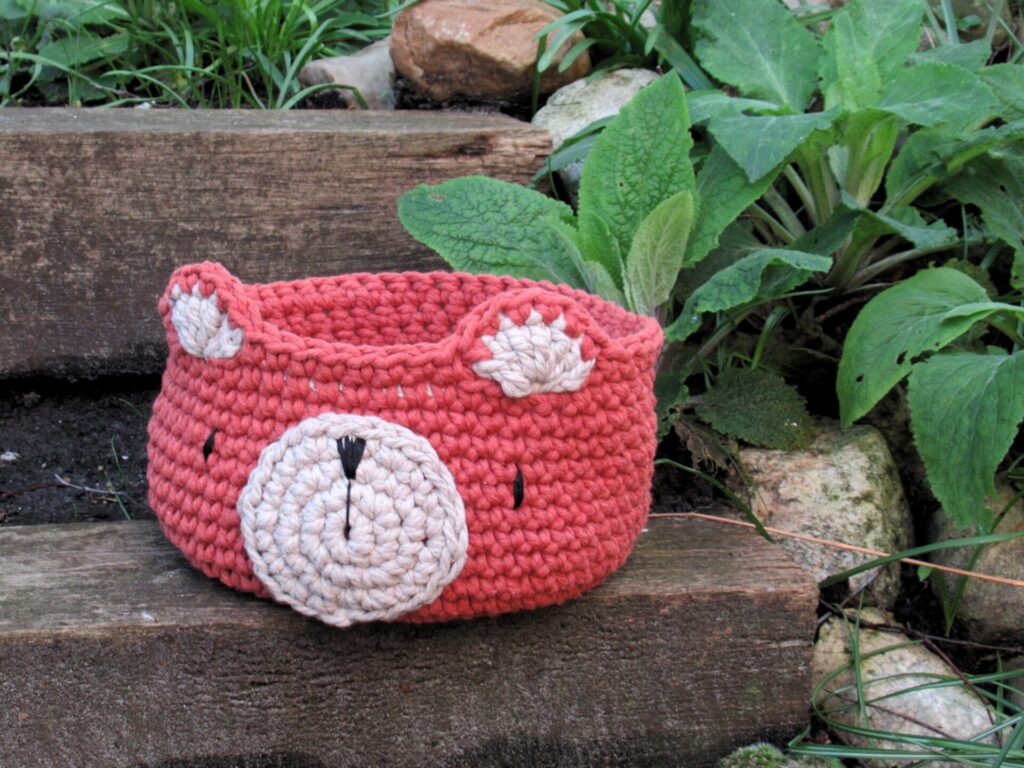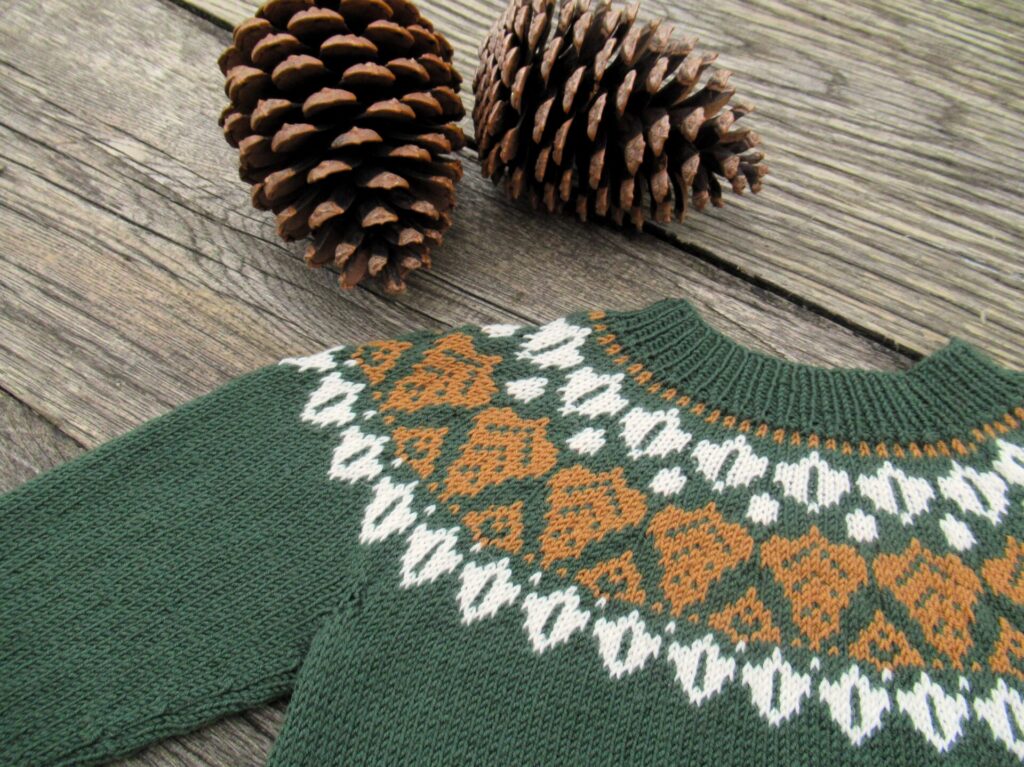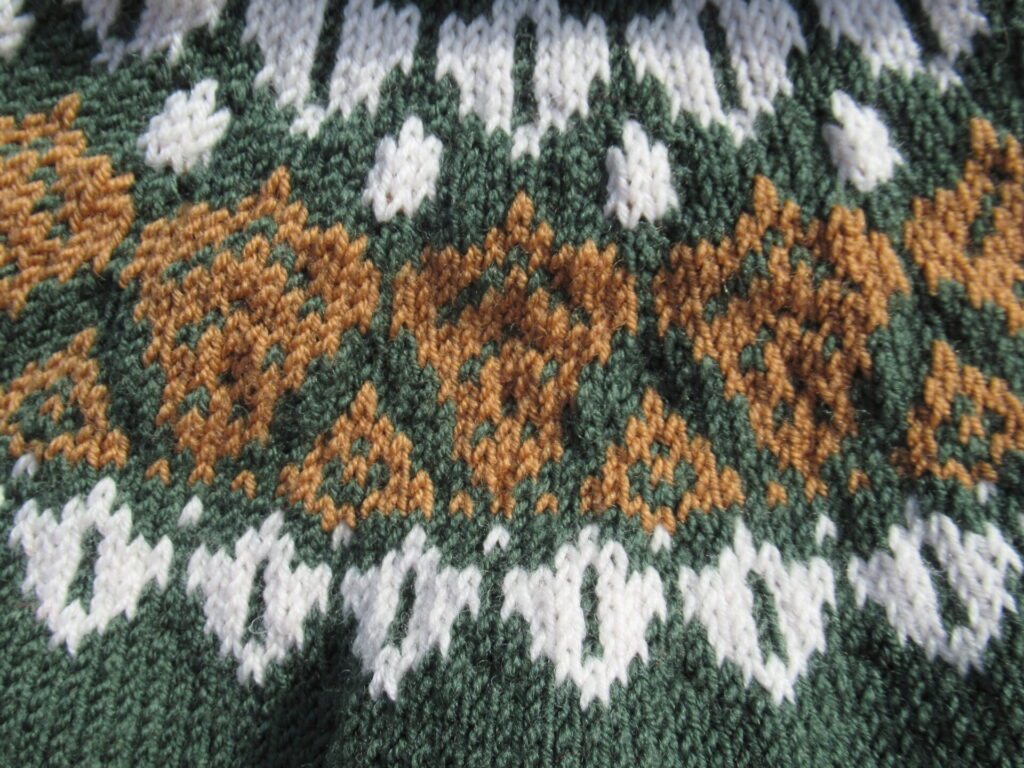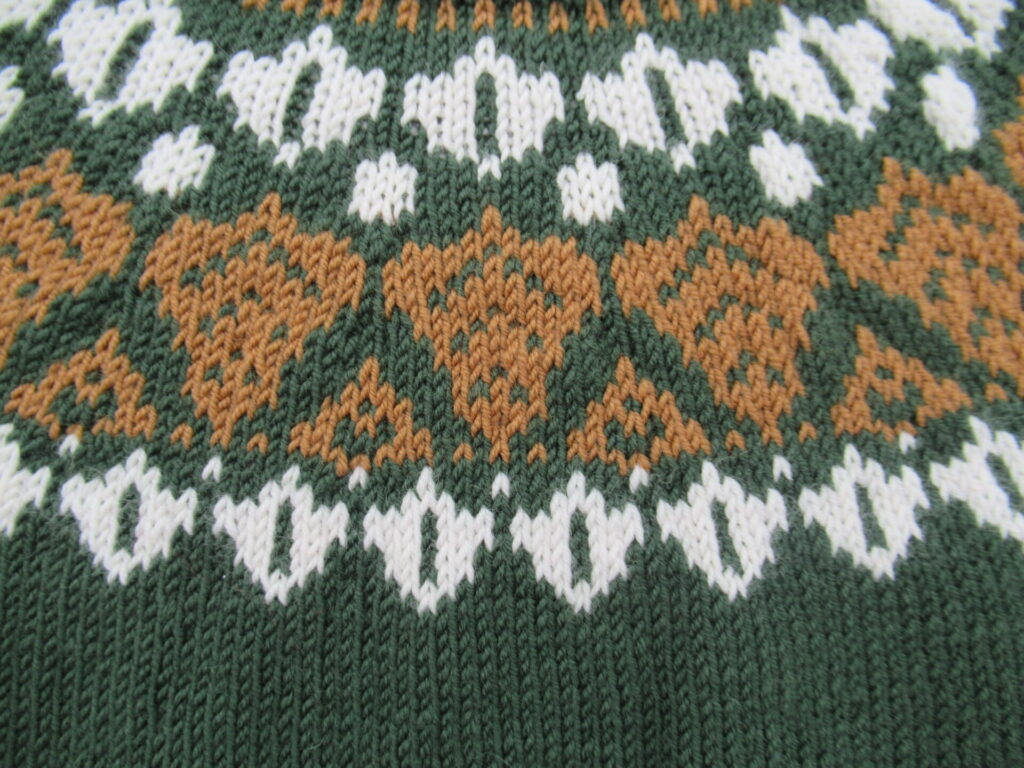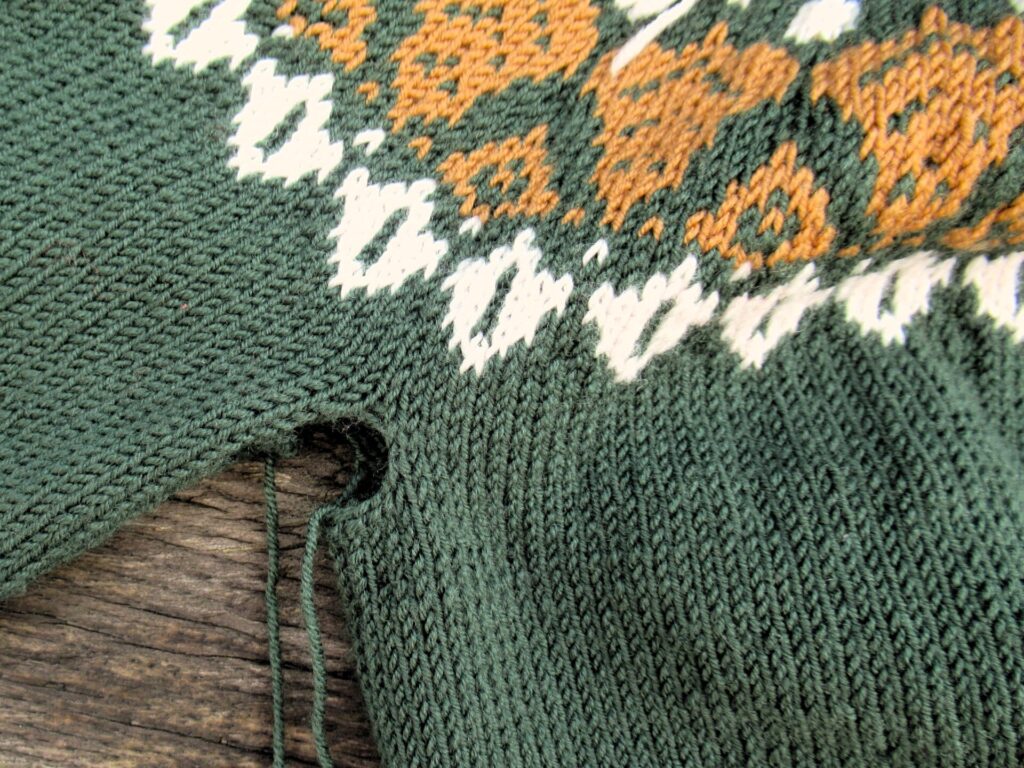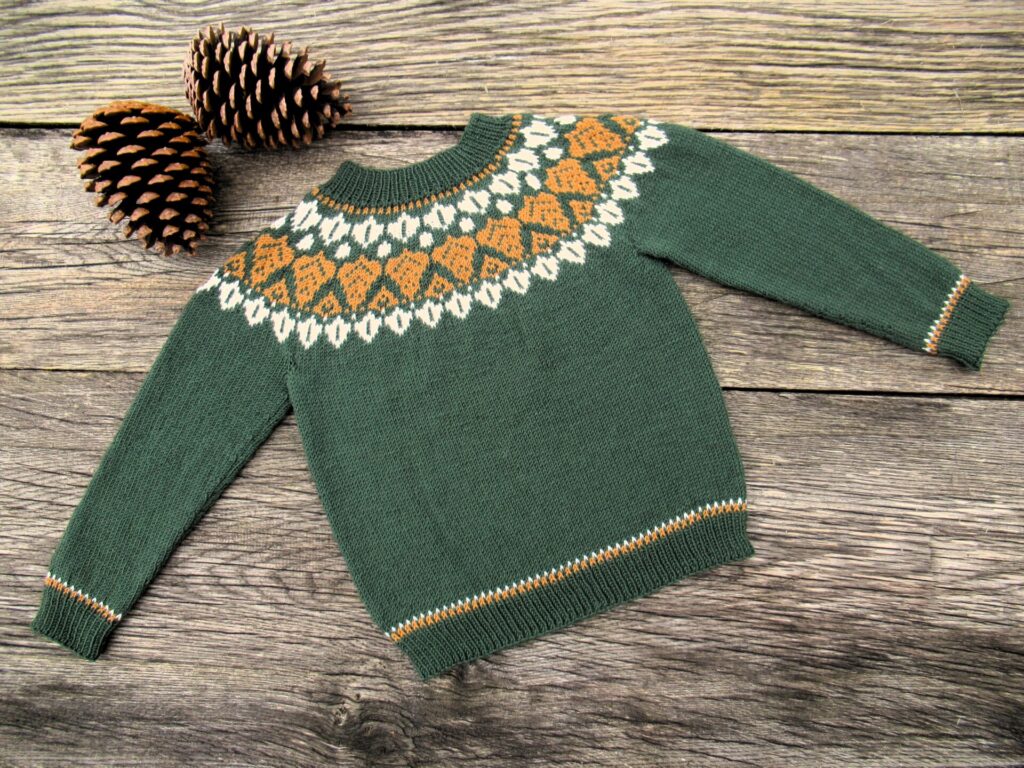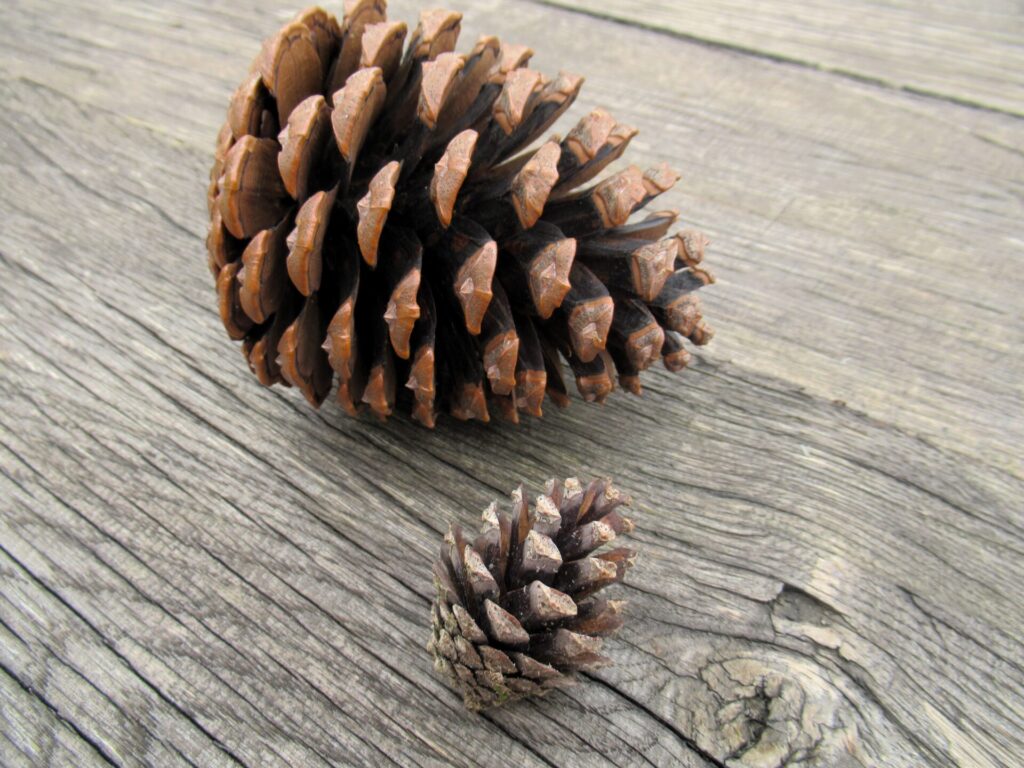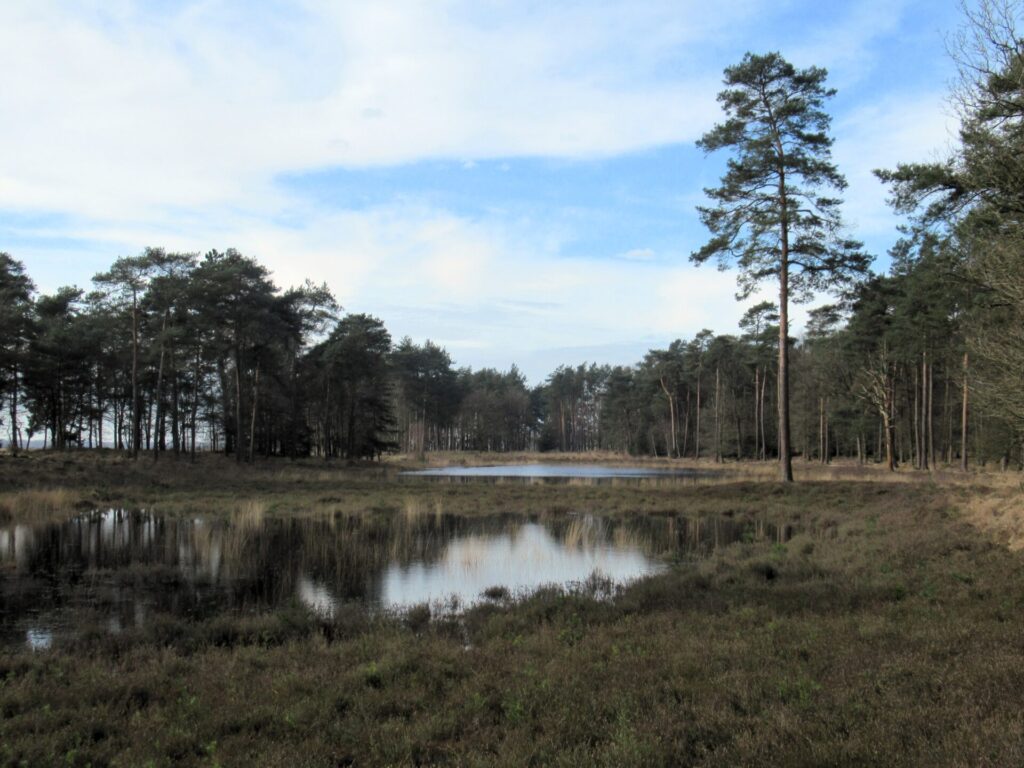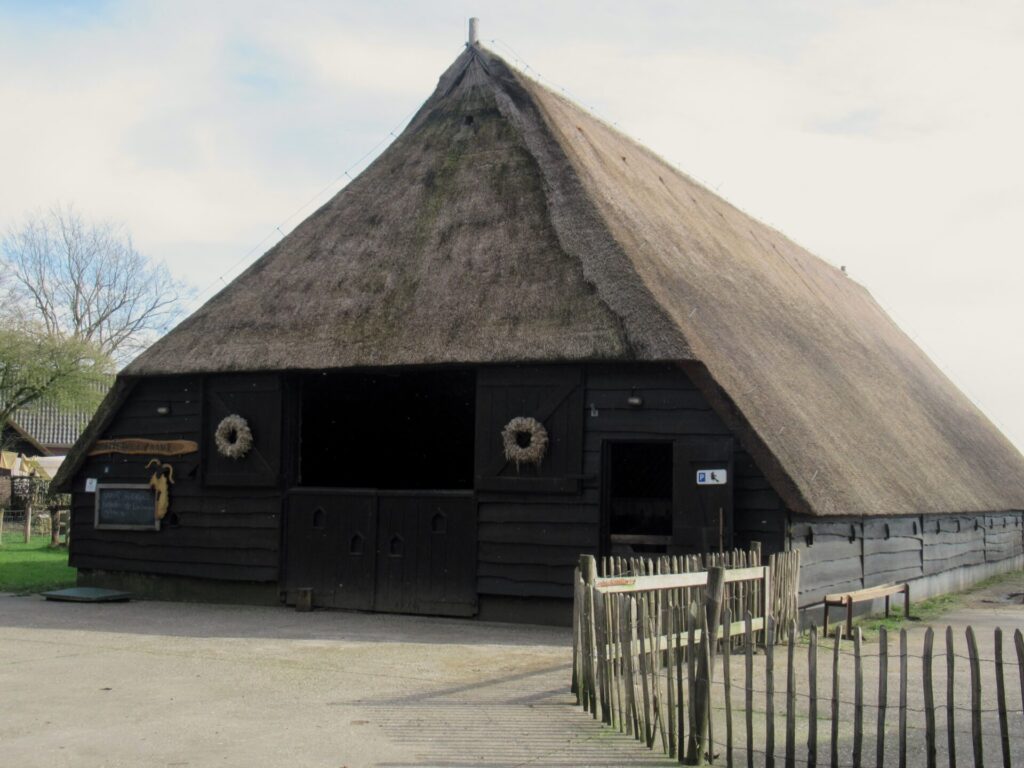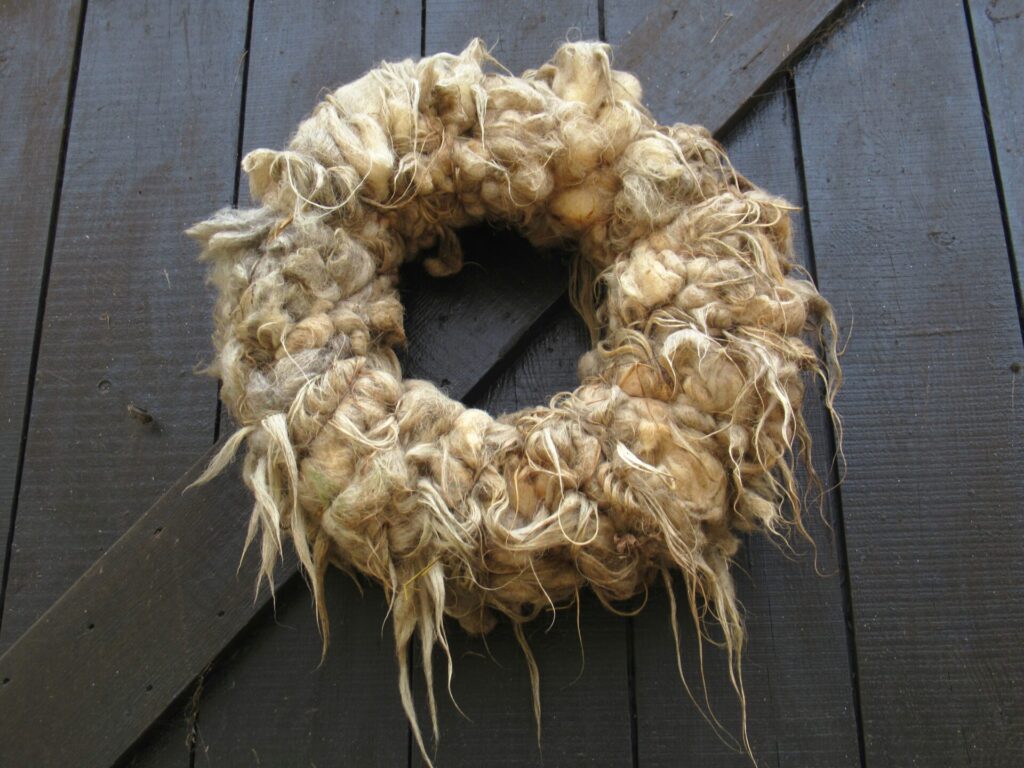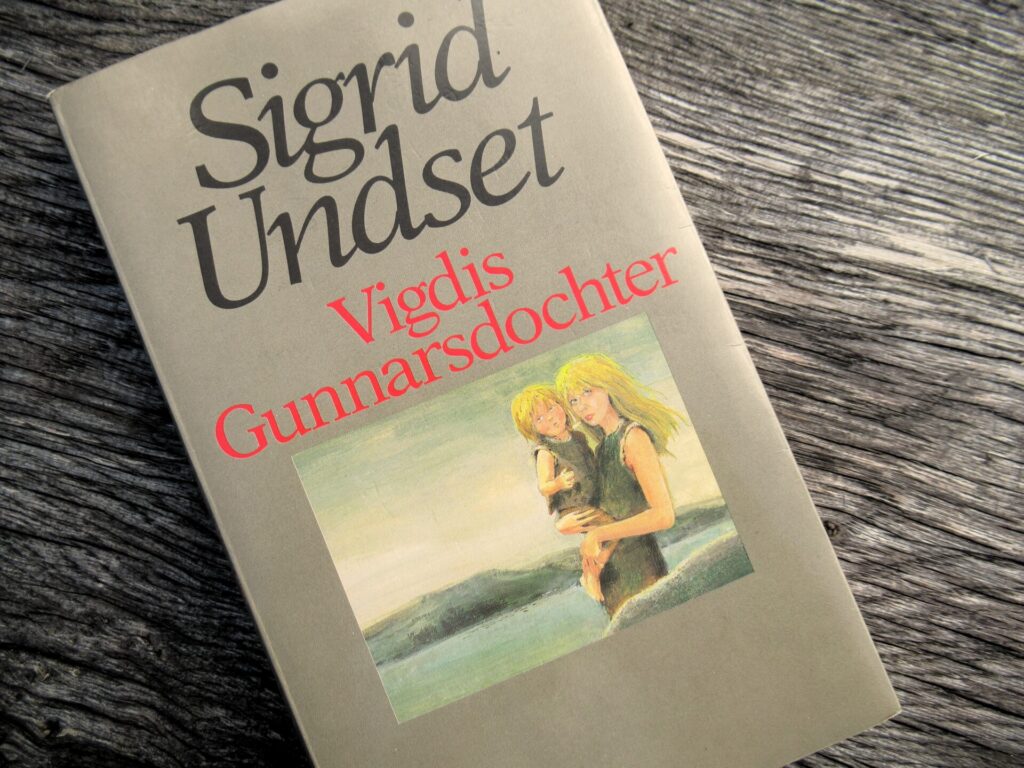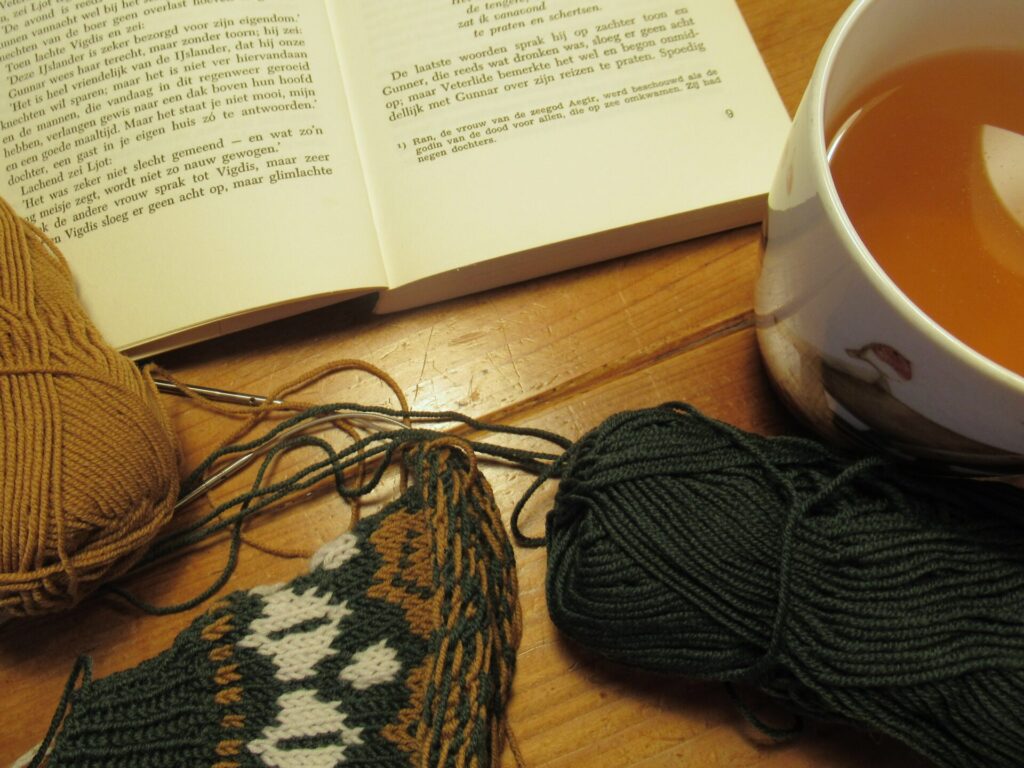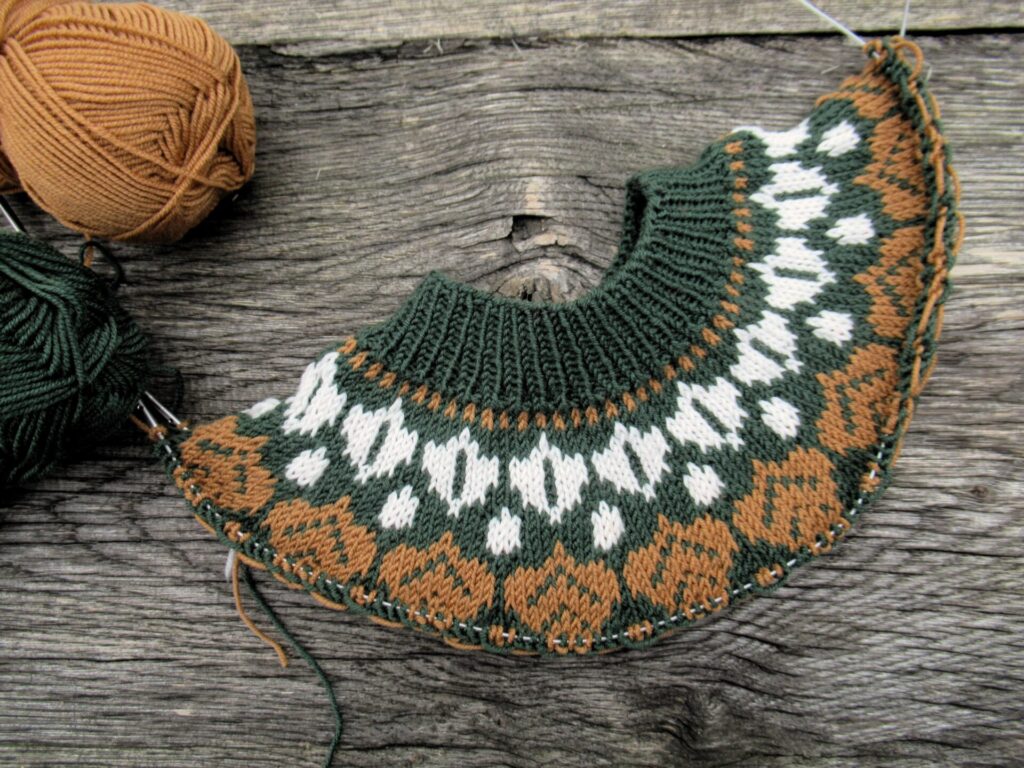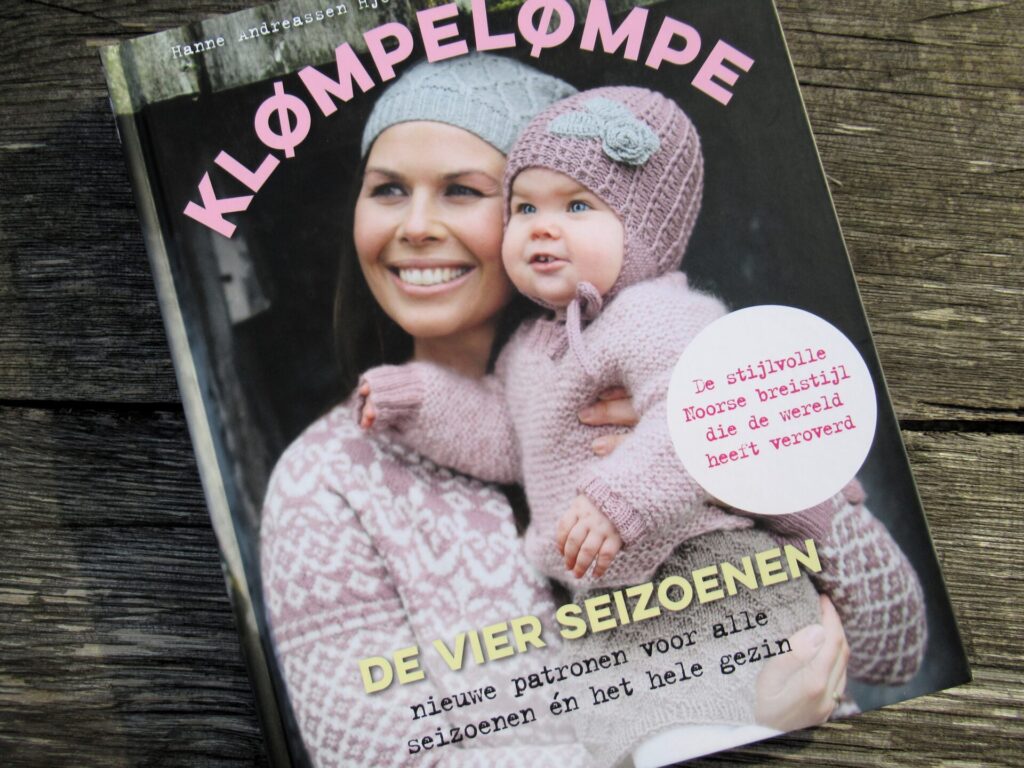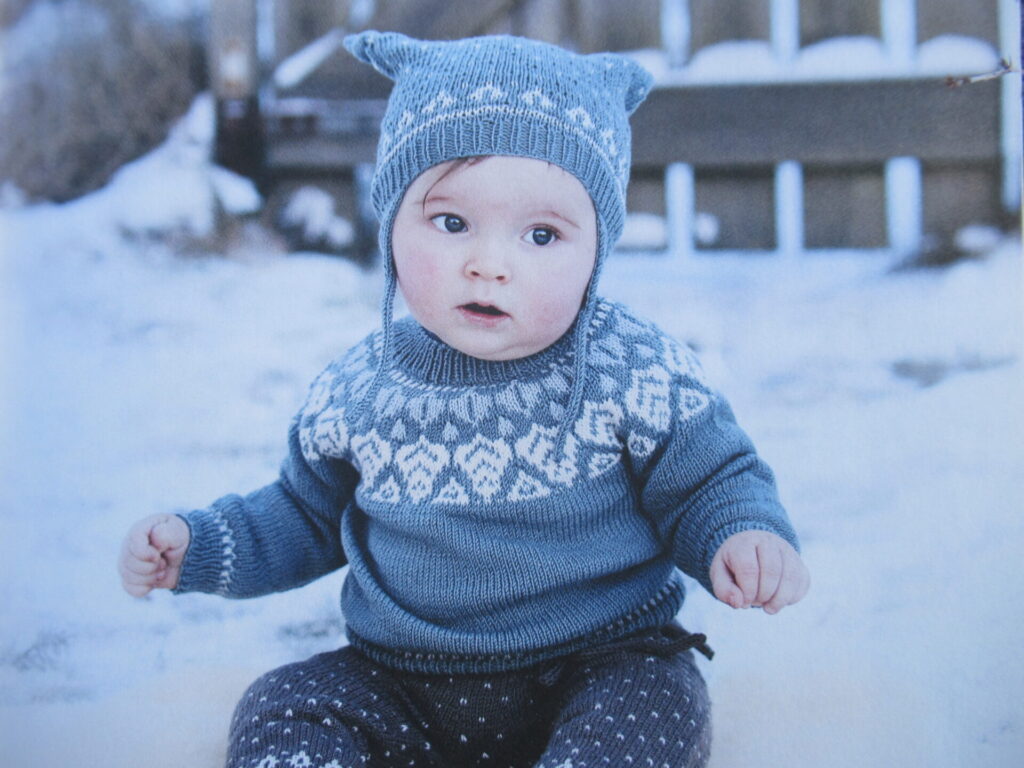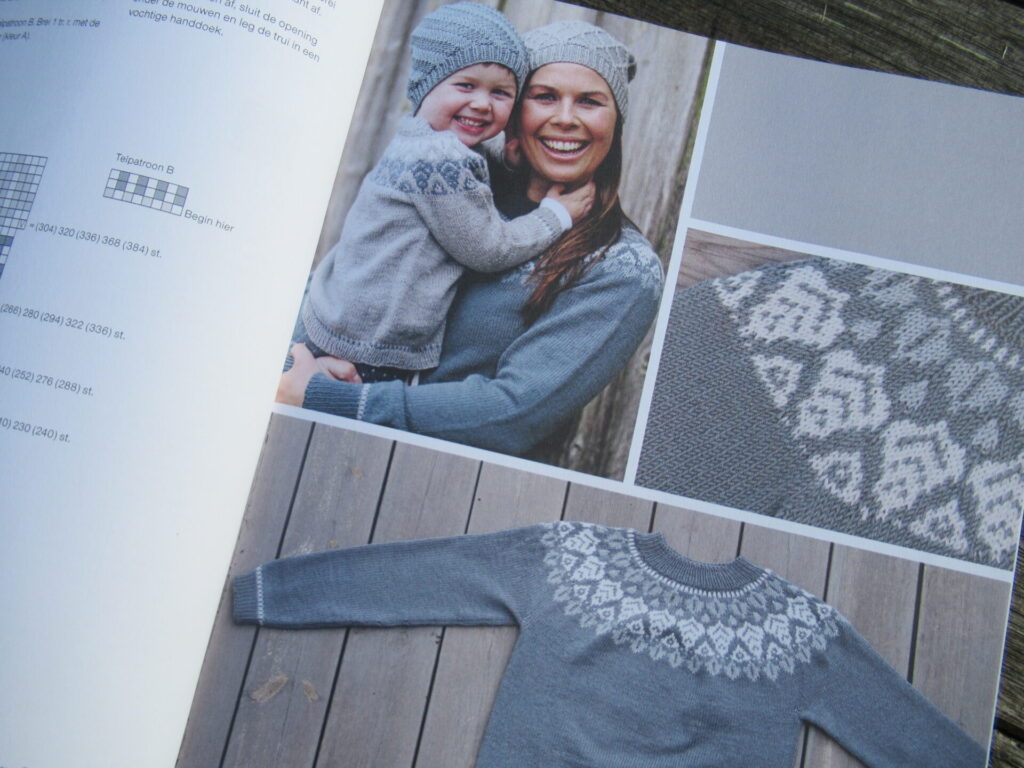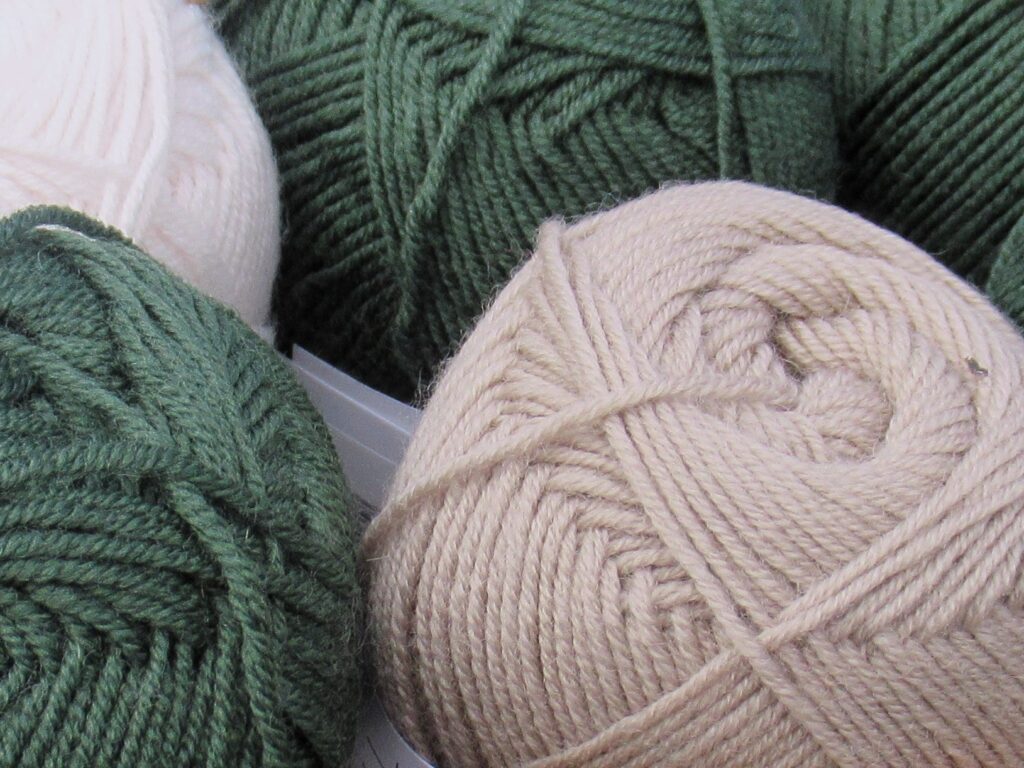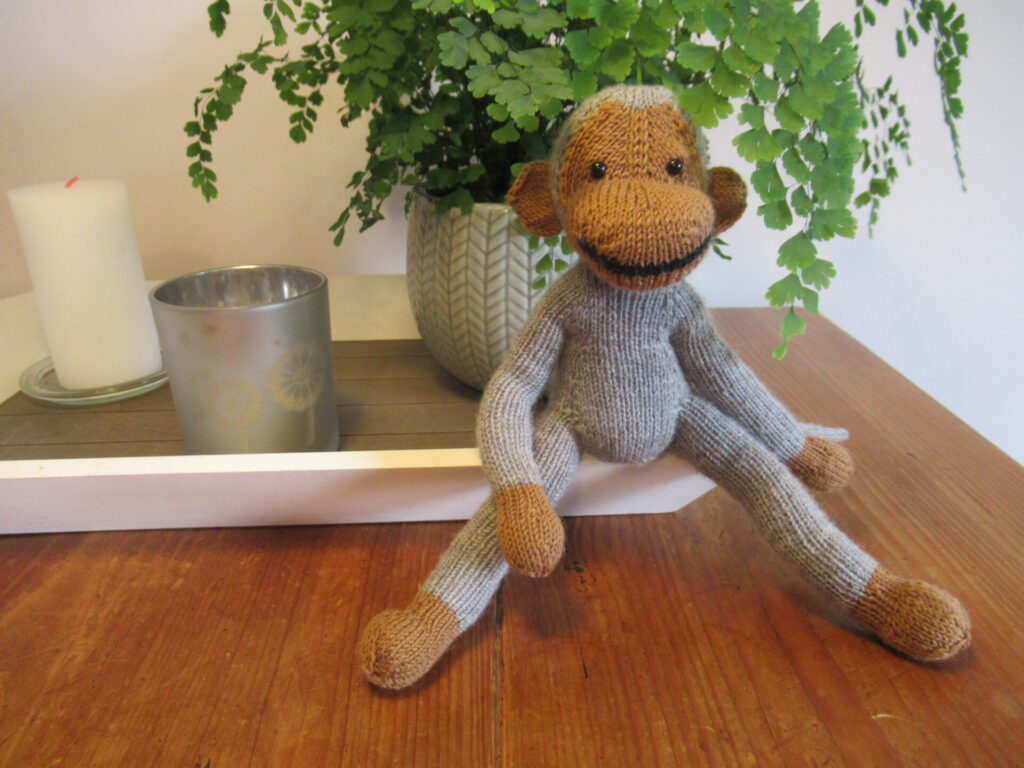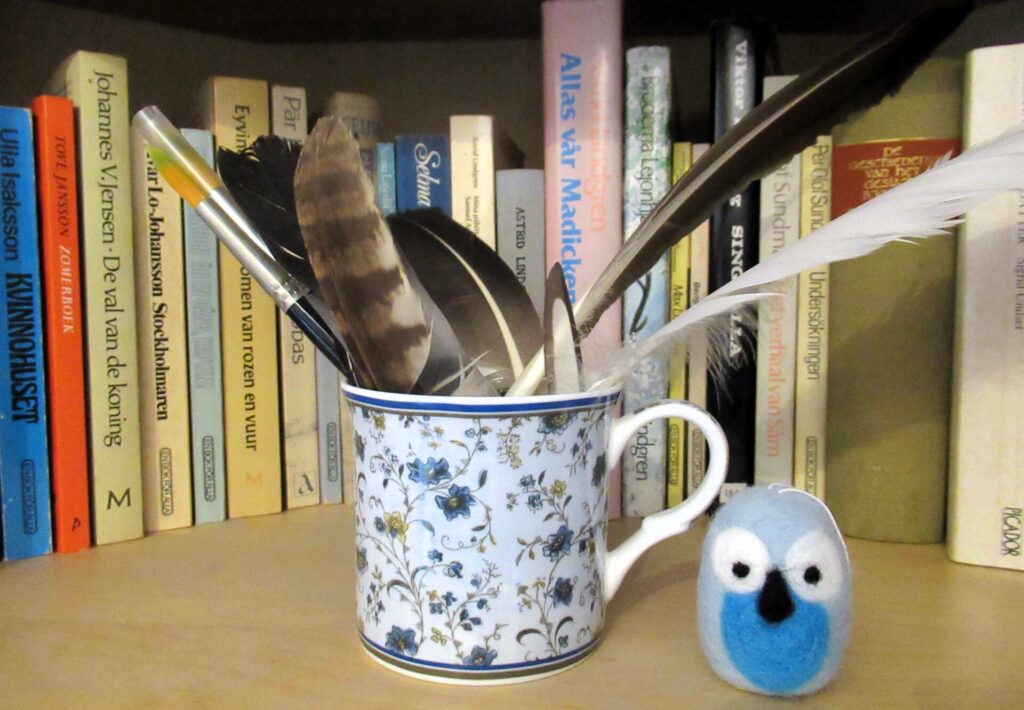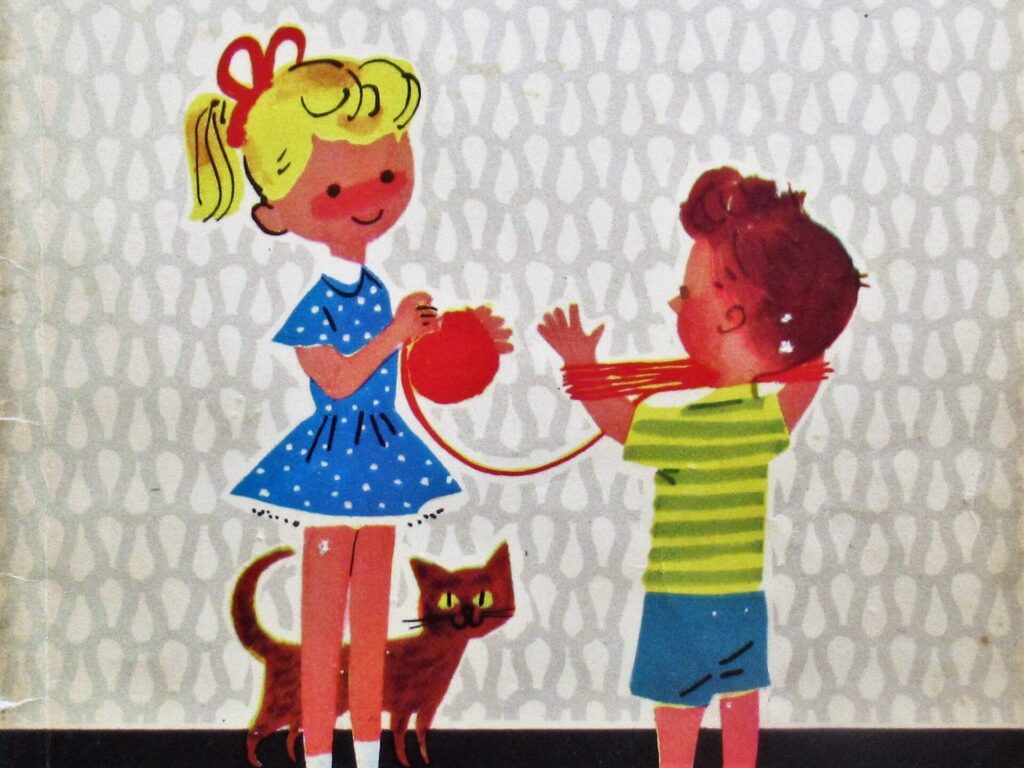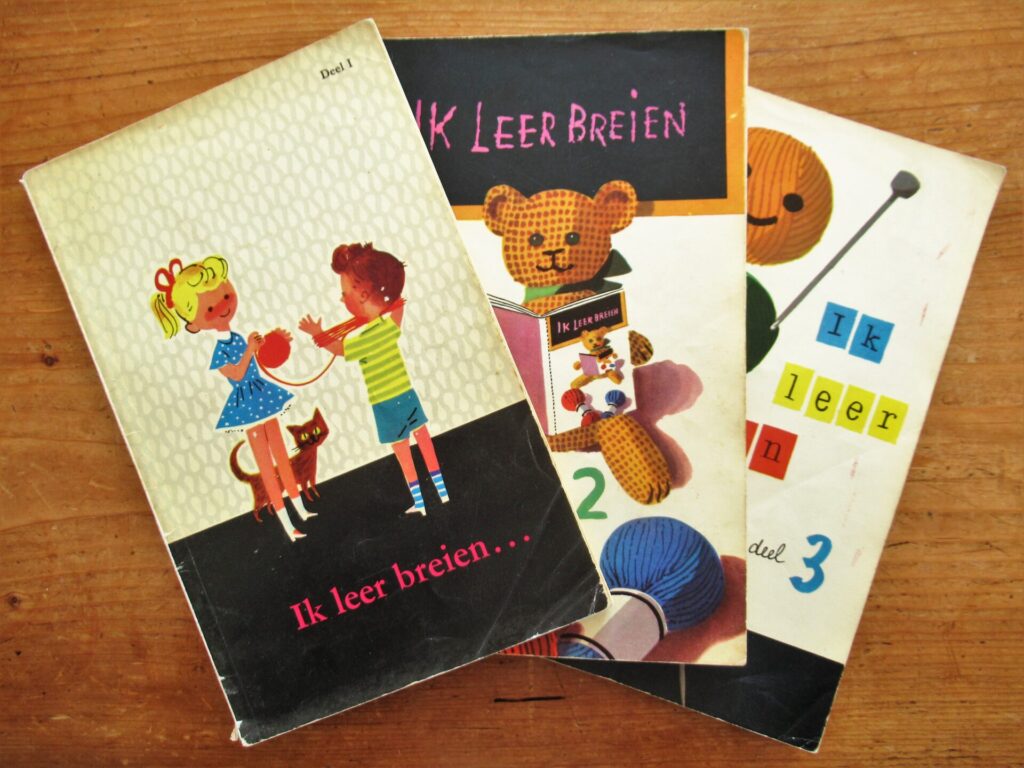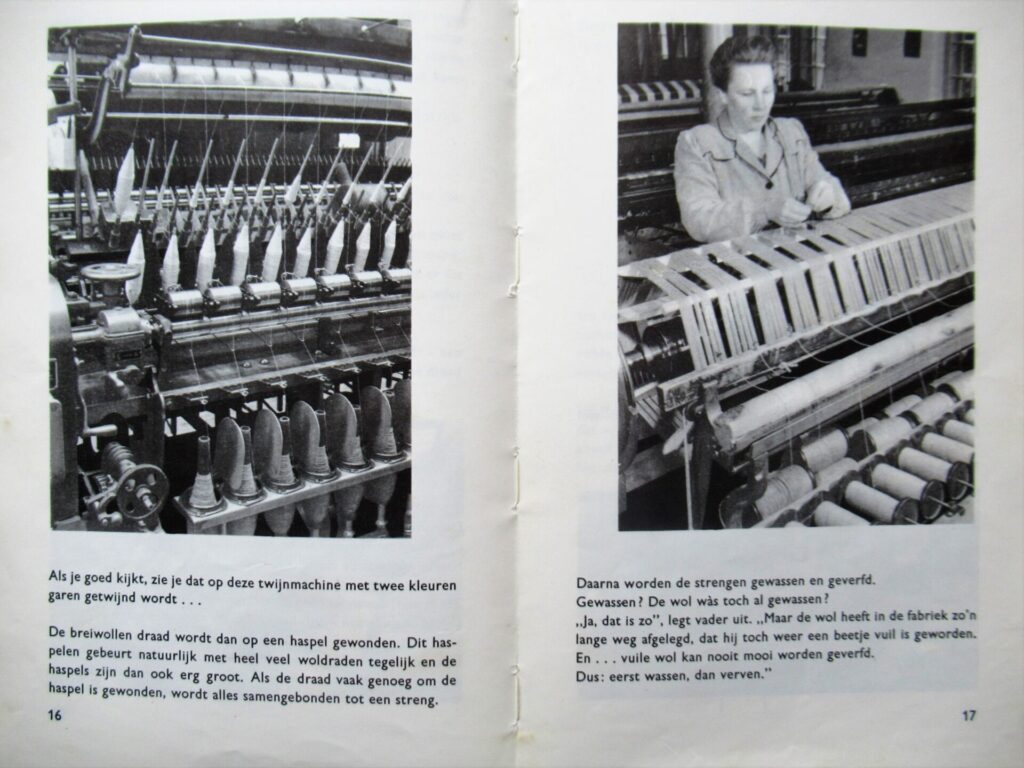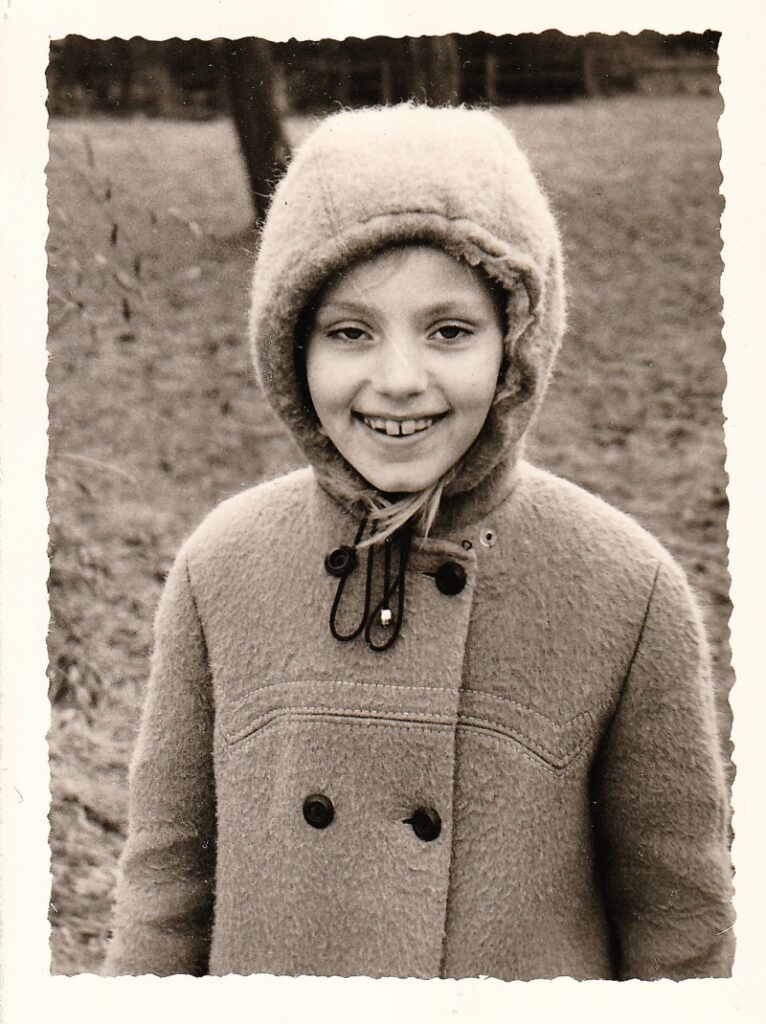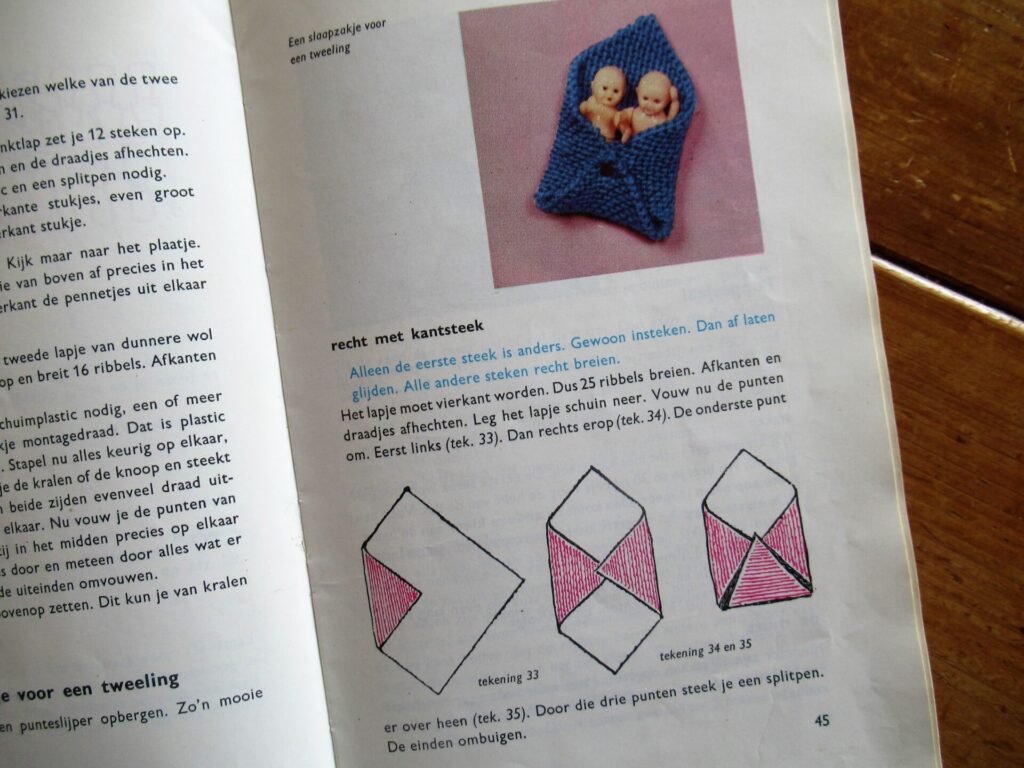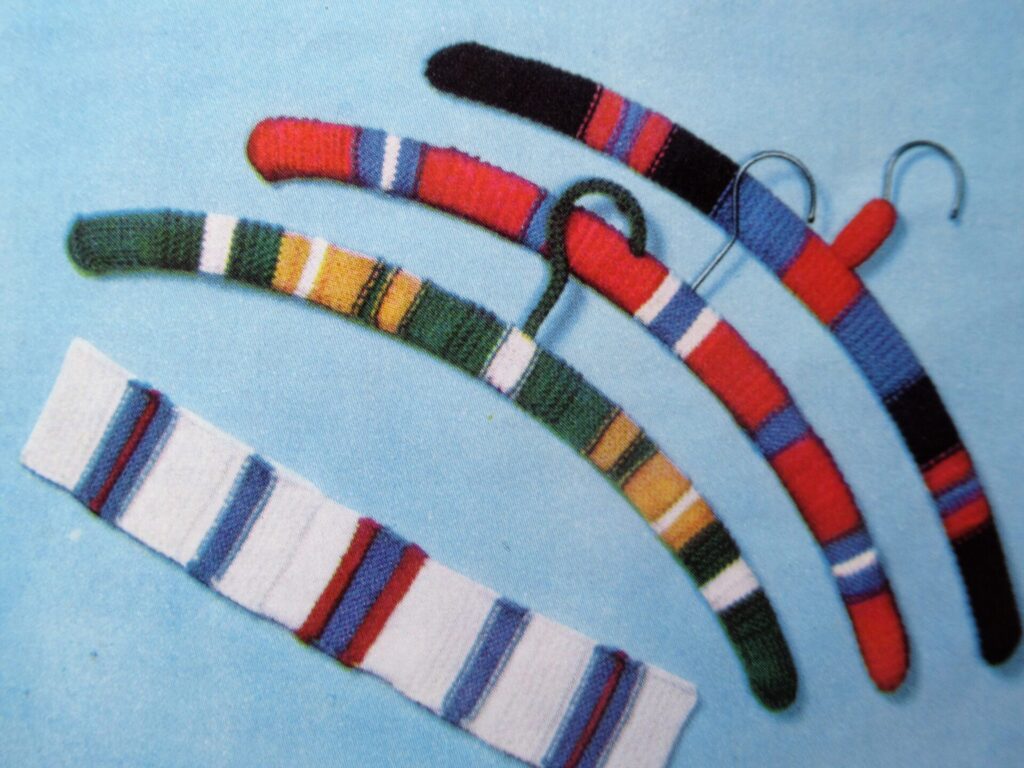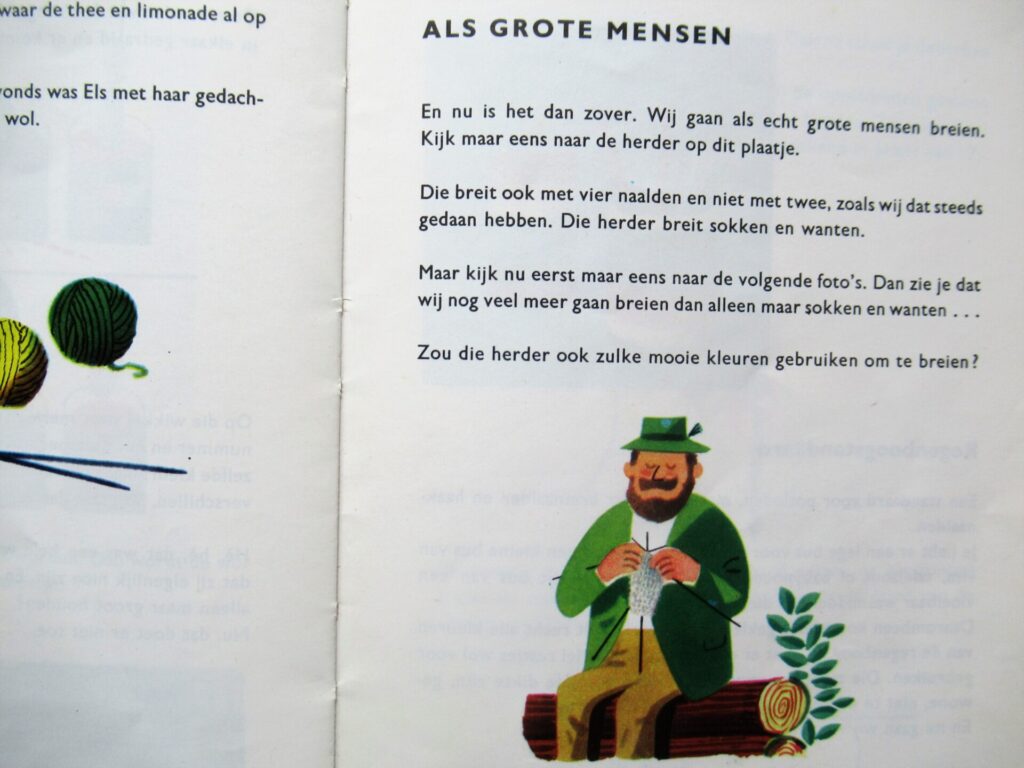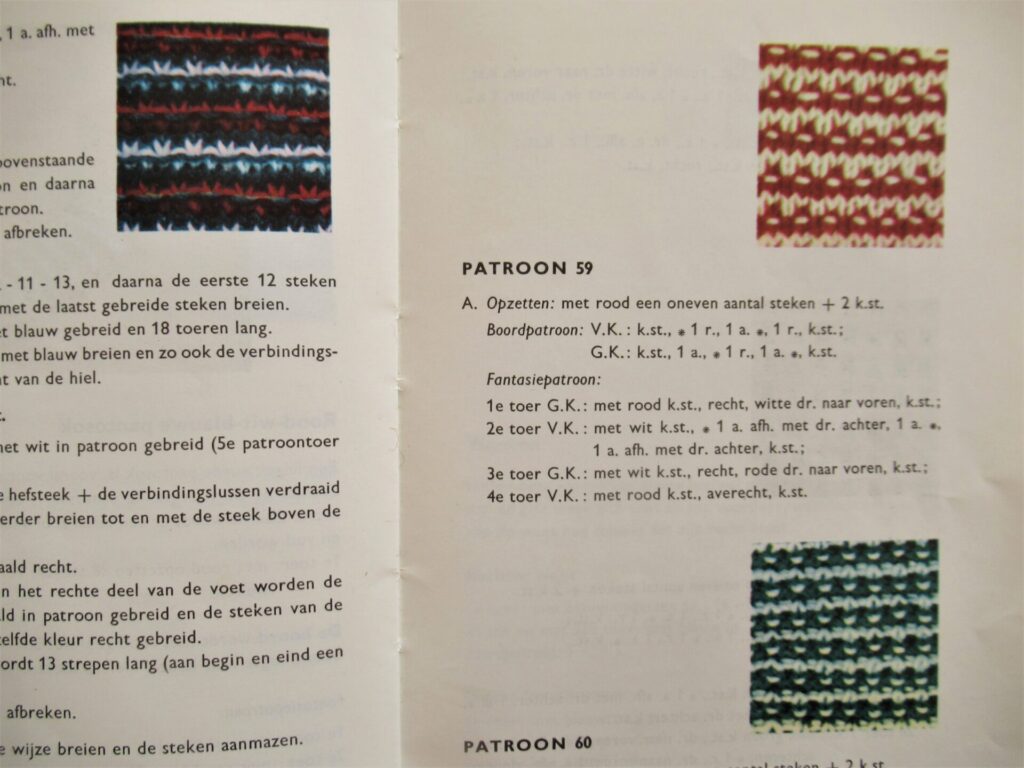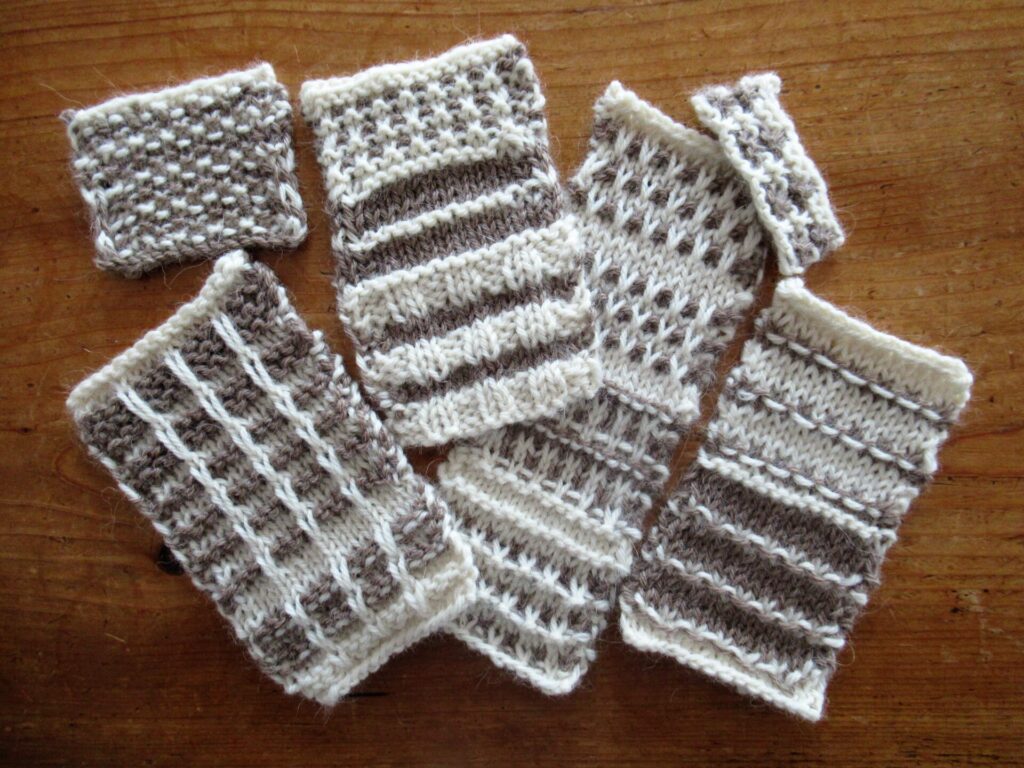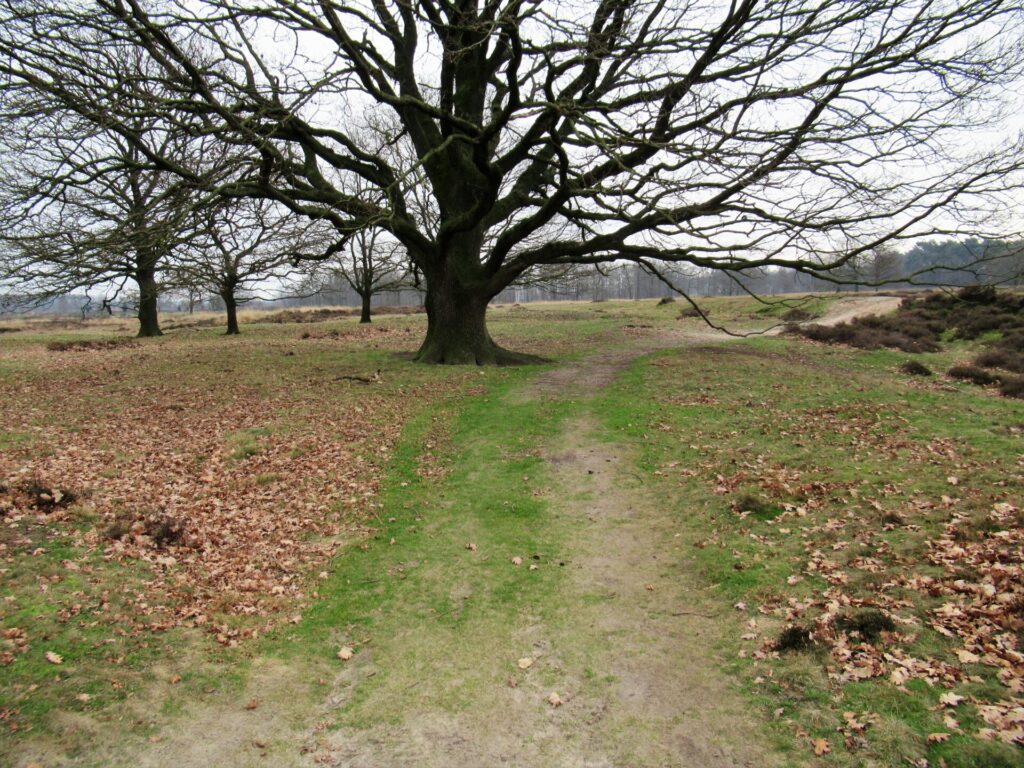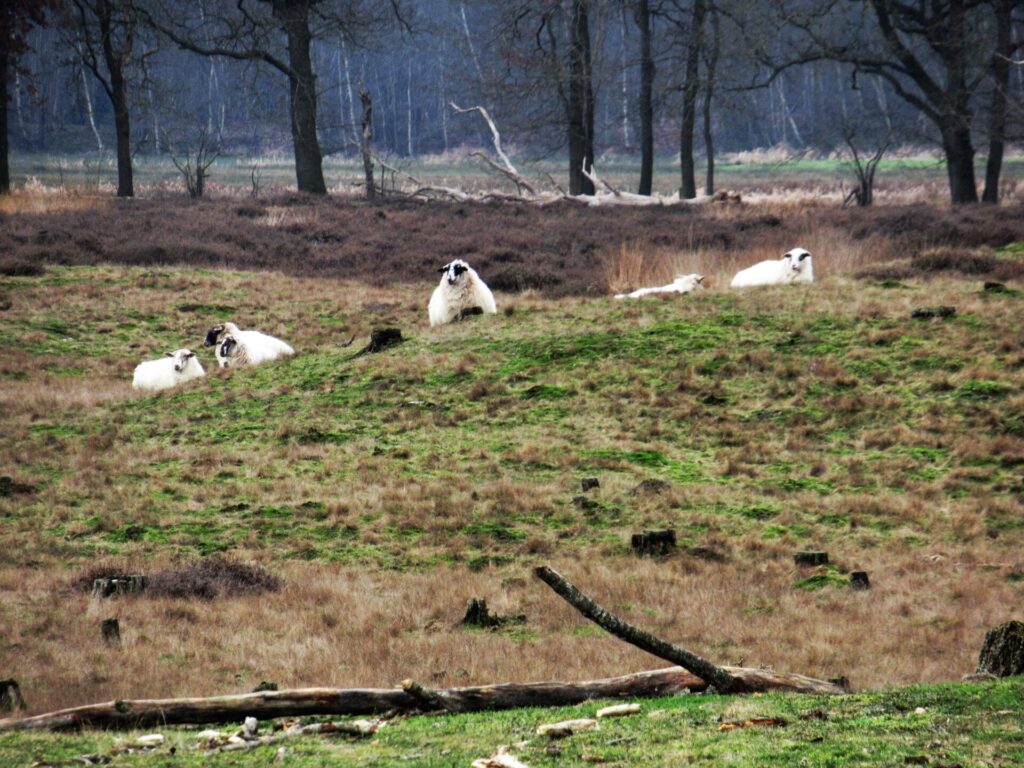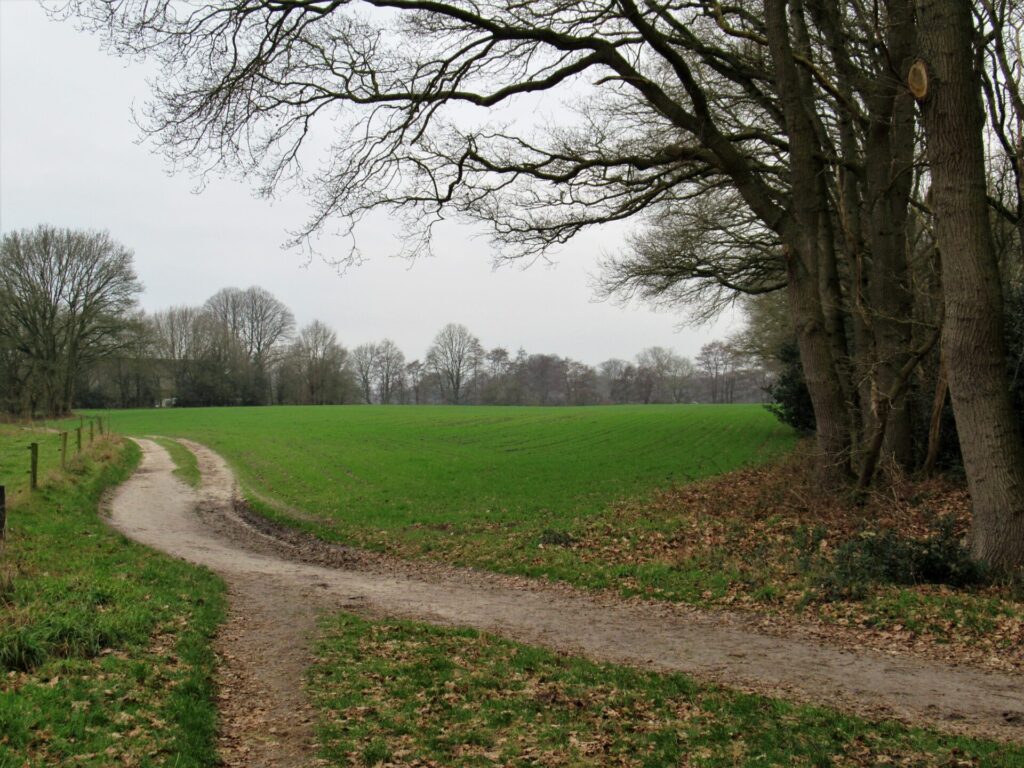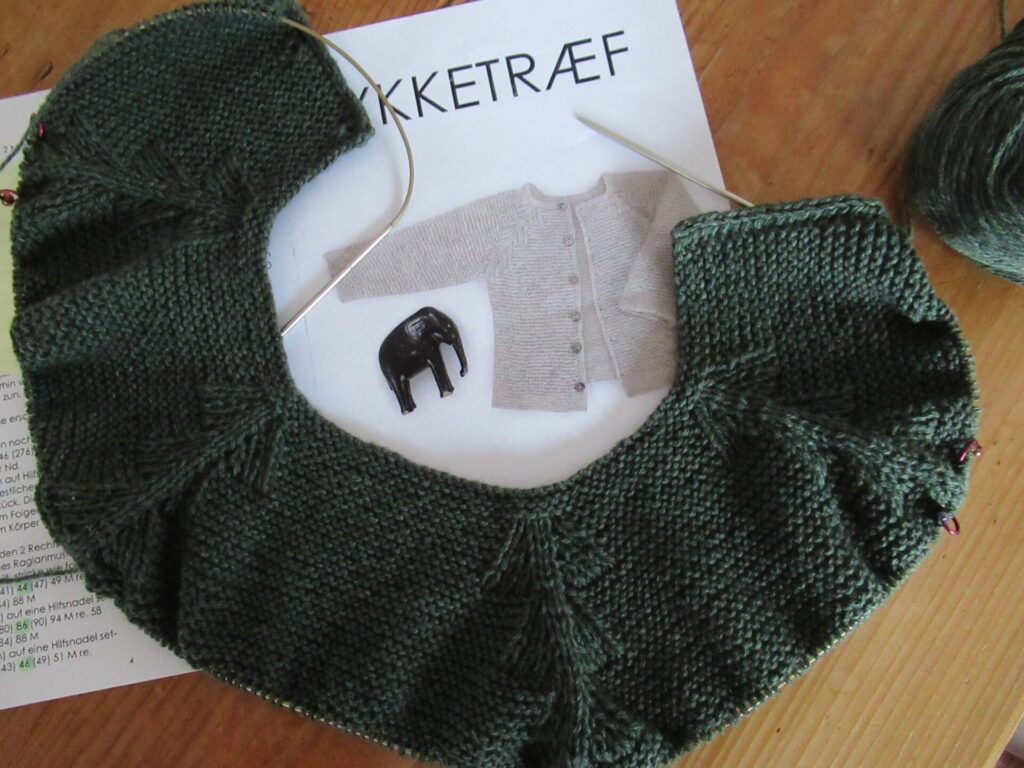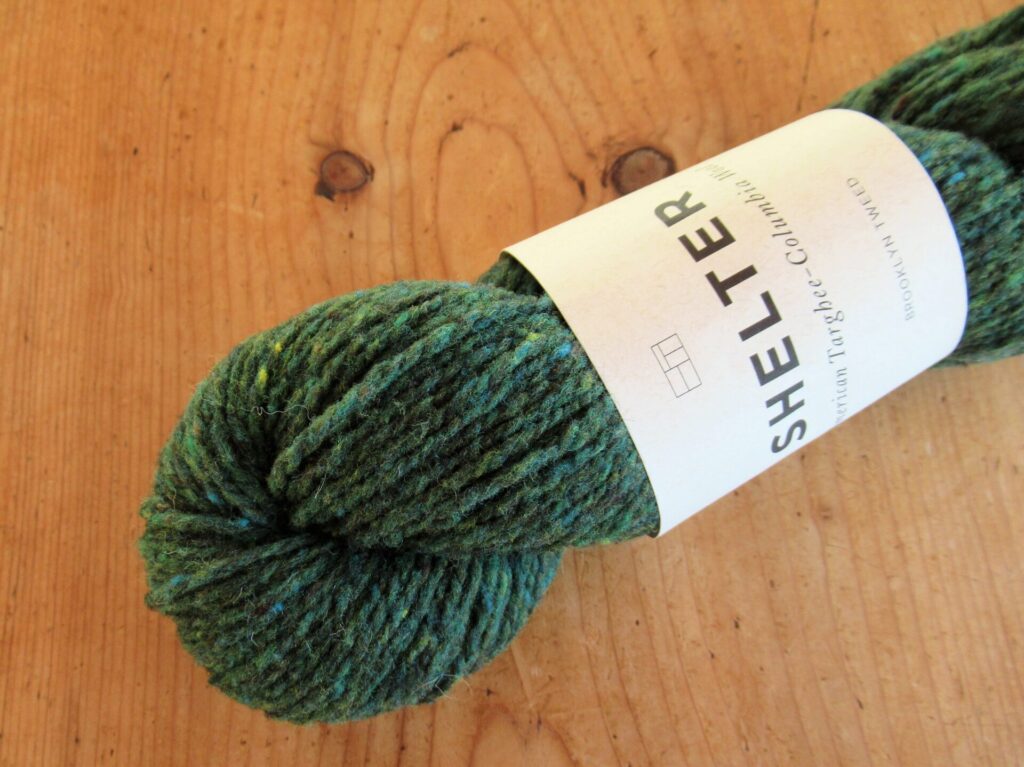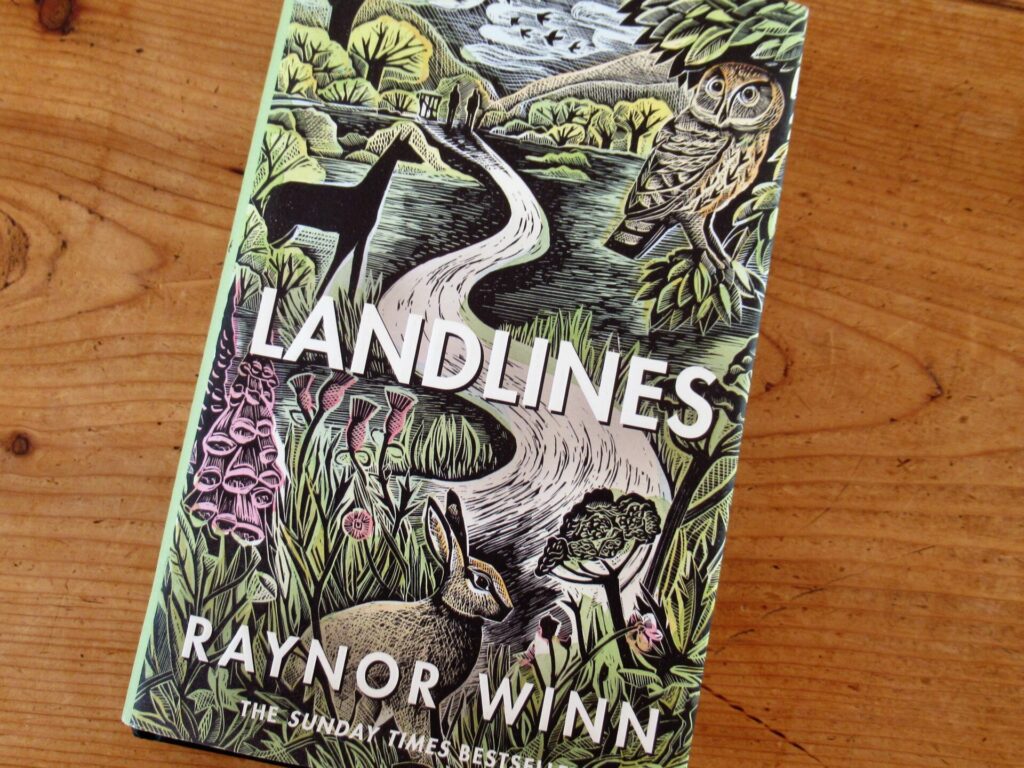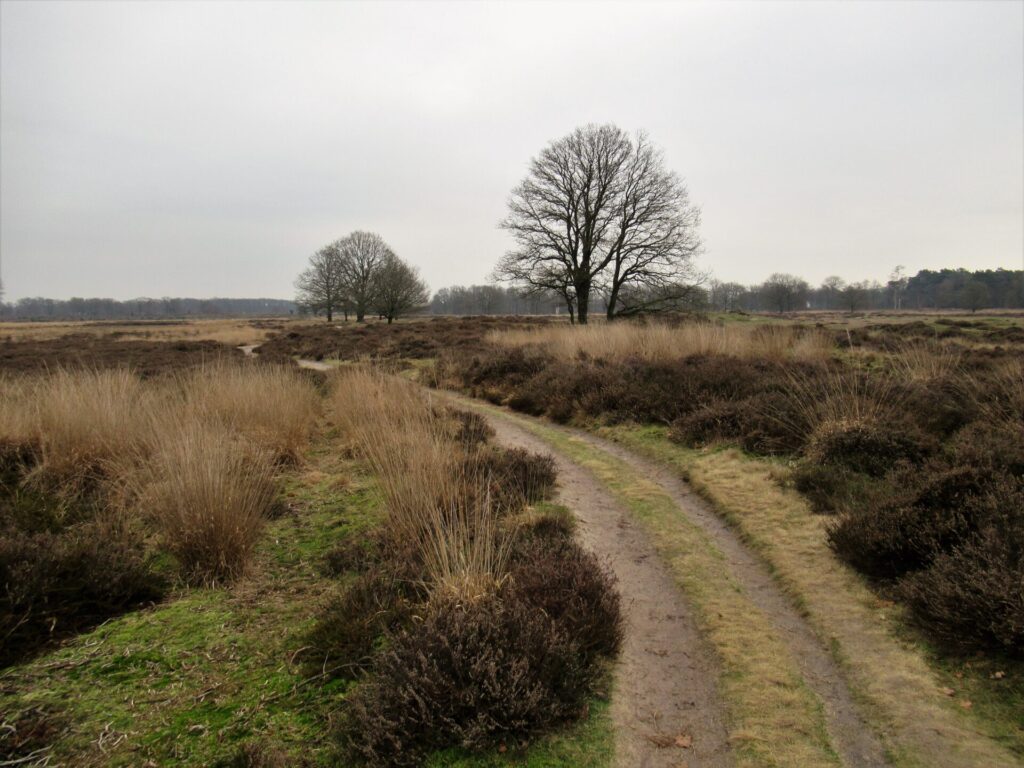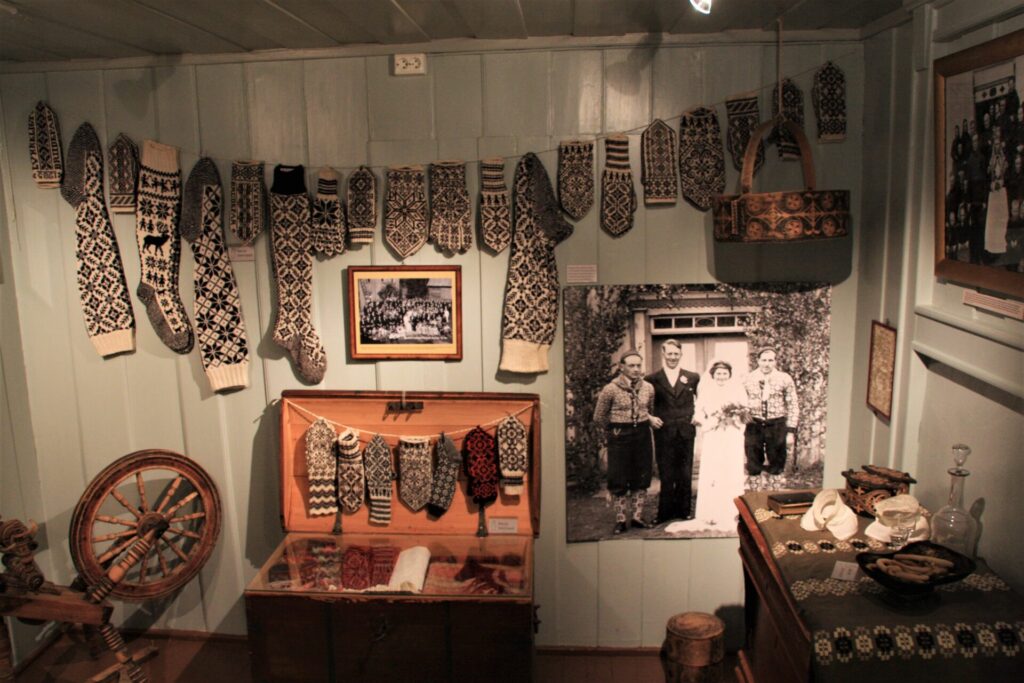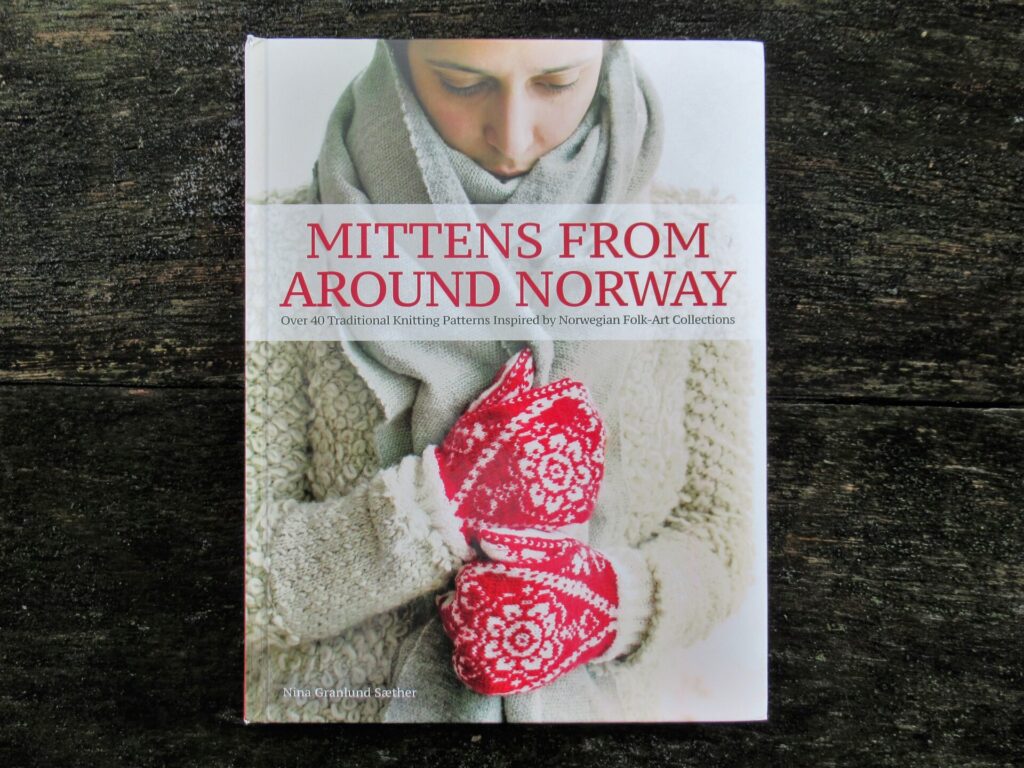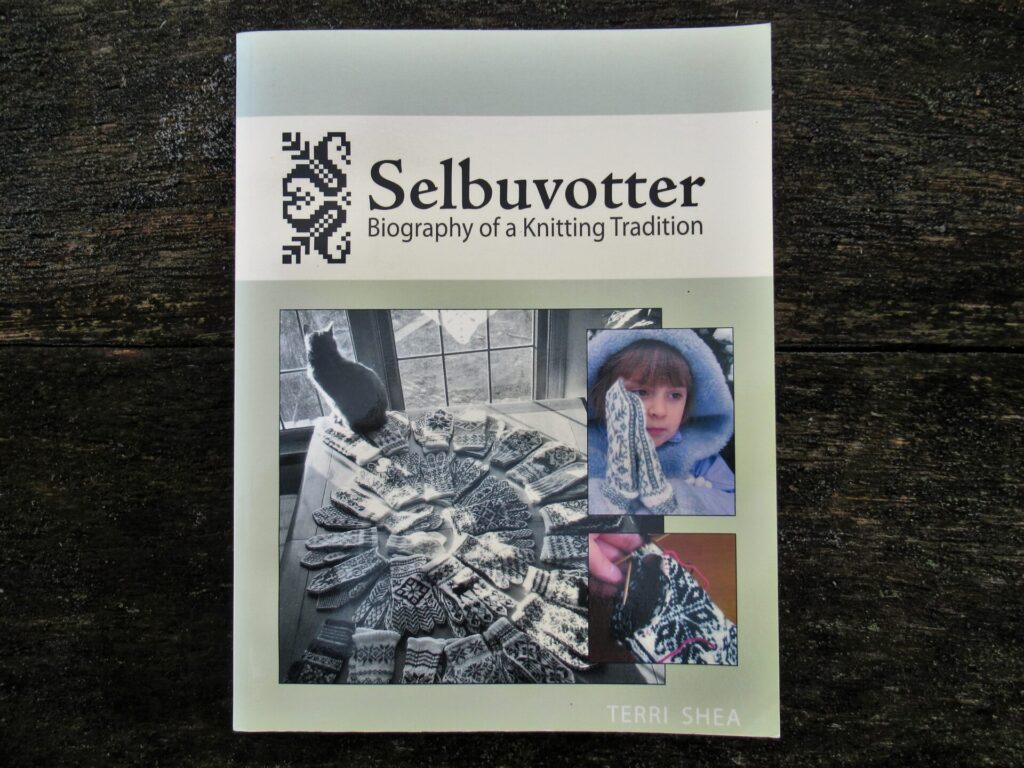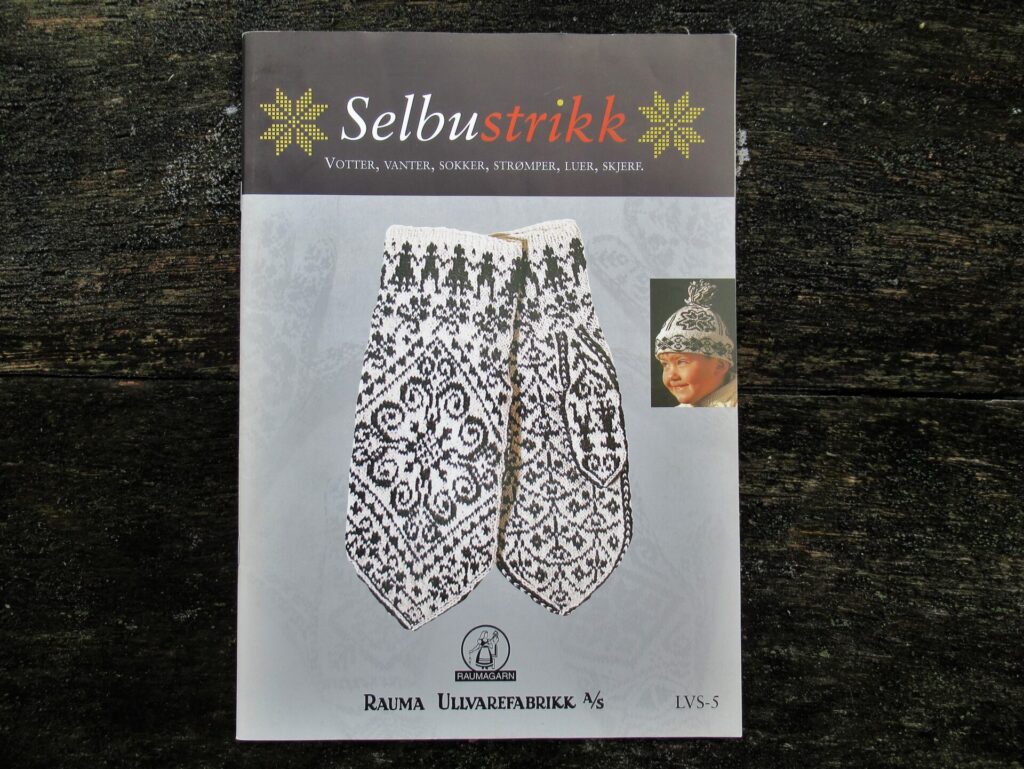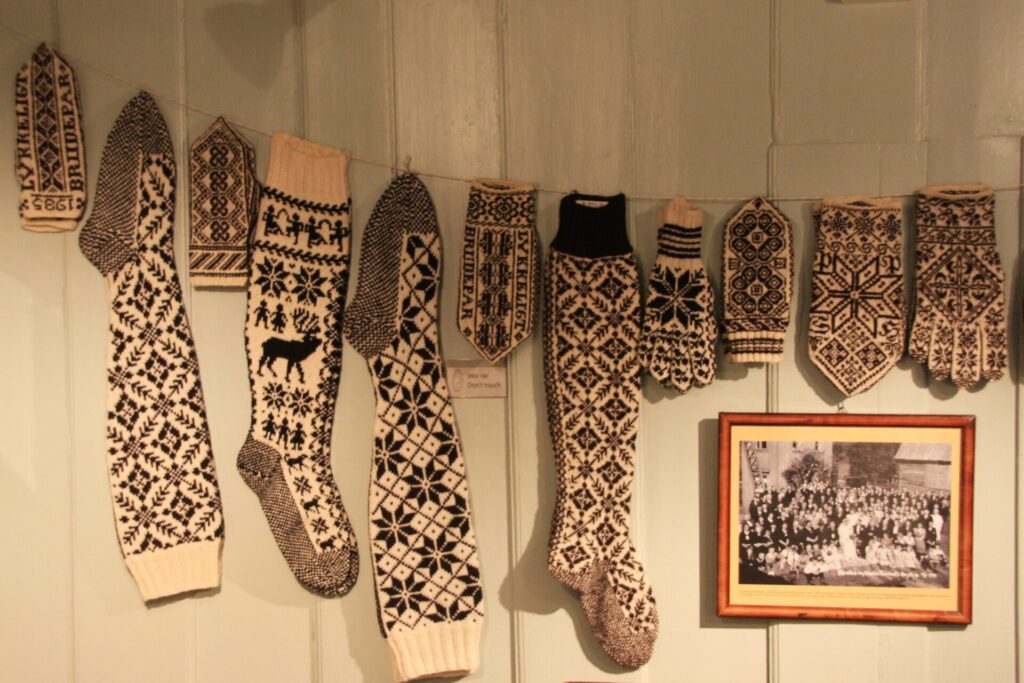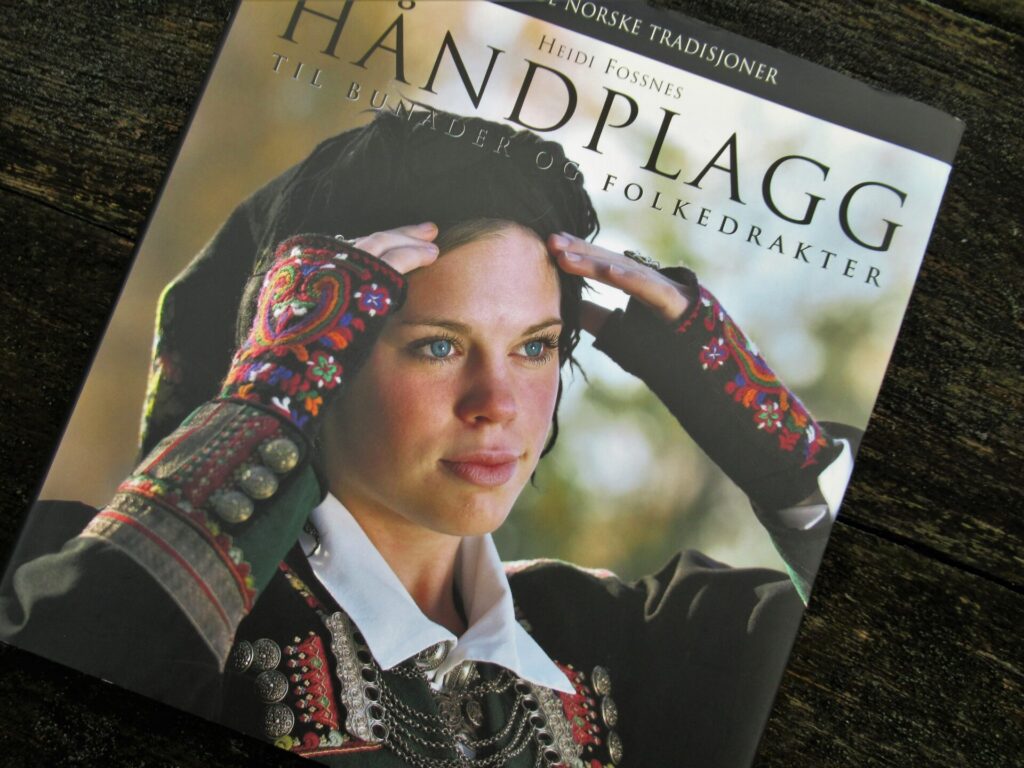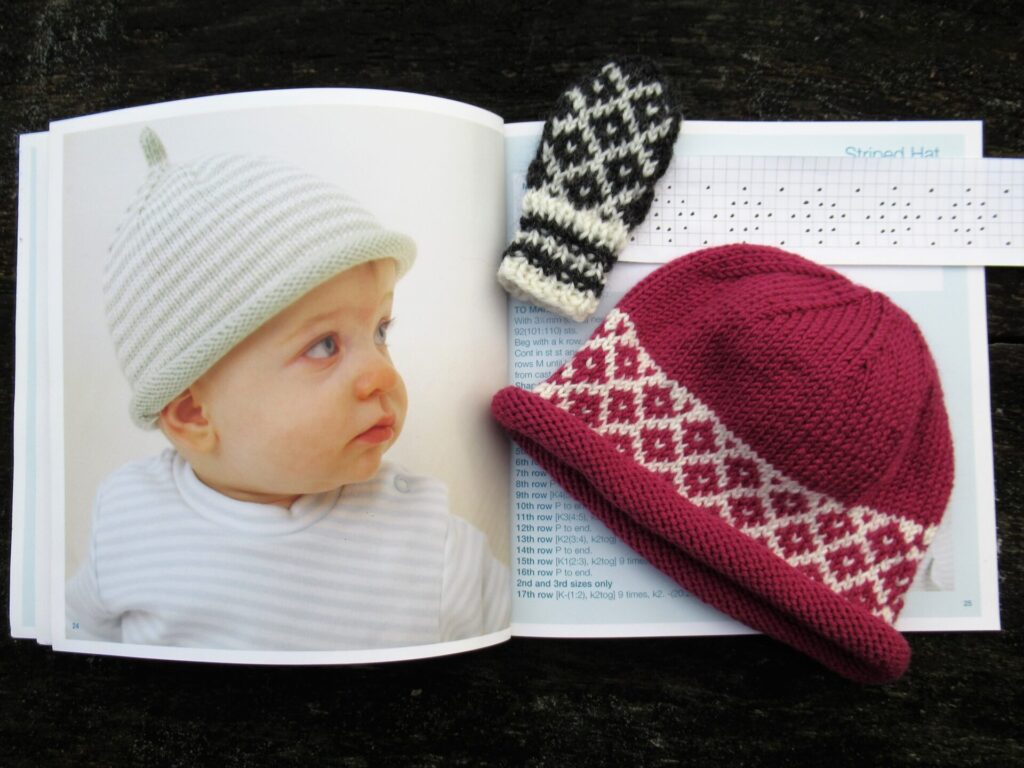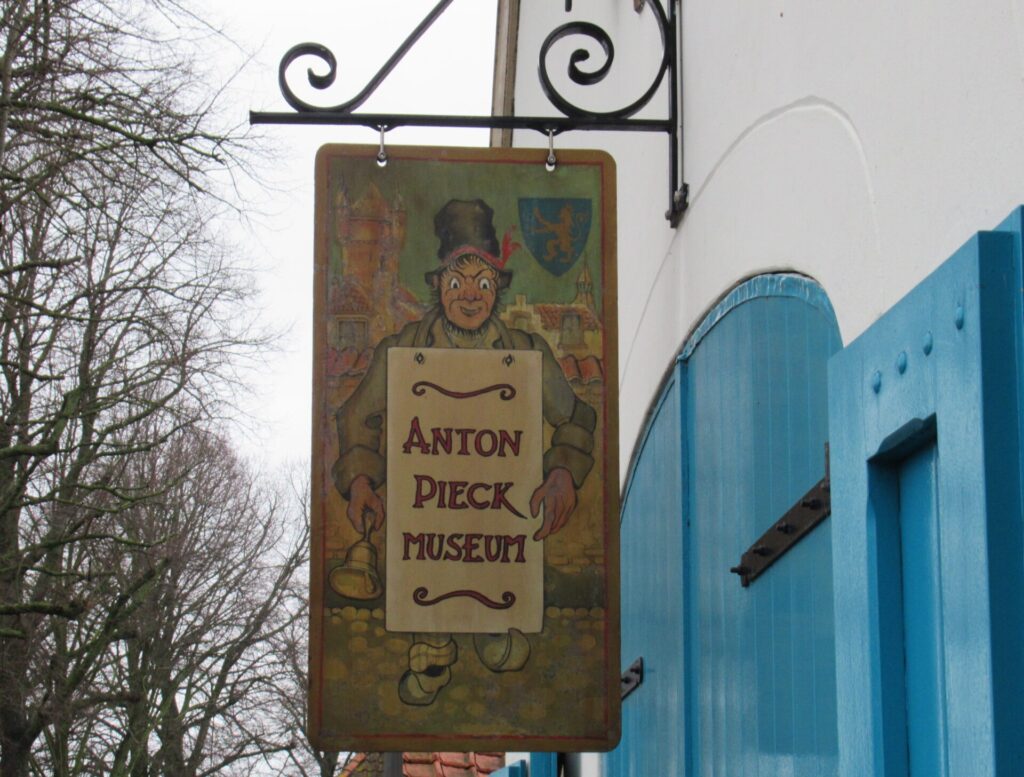
Hello! While I am knitting a pair of Norwegian (Selbu) mittens, I am also reading a Norwegian novel, or actually it’s three novels in one – the Bjørndal trilogy by Trygve Gulbranssen. It’s about the life and times of Dag Bjørndal, who lives in an unspecified place in the Norwegian mountains and trades in everything his lands and forests yield – wood, furs, meat, grain. We follow Dag from a young age until his death. Although the story is set in the late 18th and early 19th centuries, its theme is still just as current today: money, the power that comes with it, and how it can be abused or used for good.
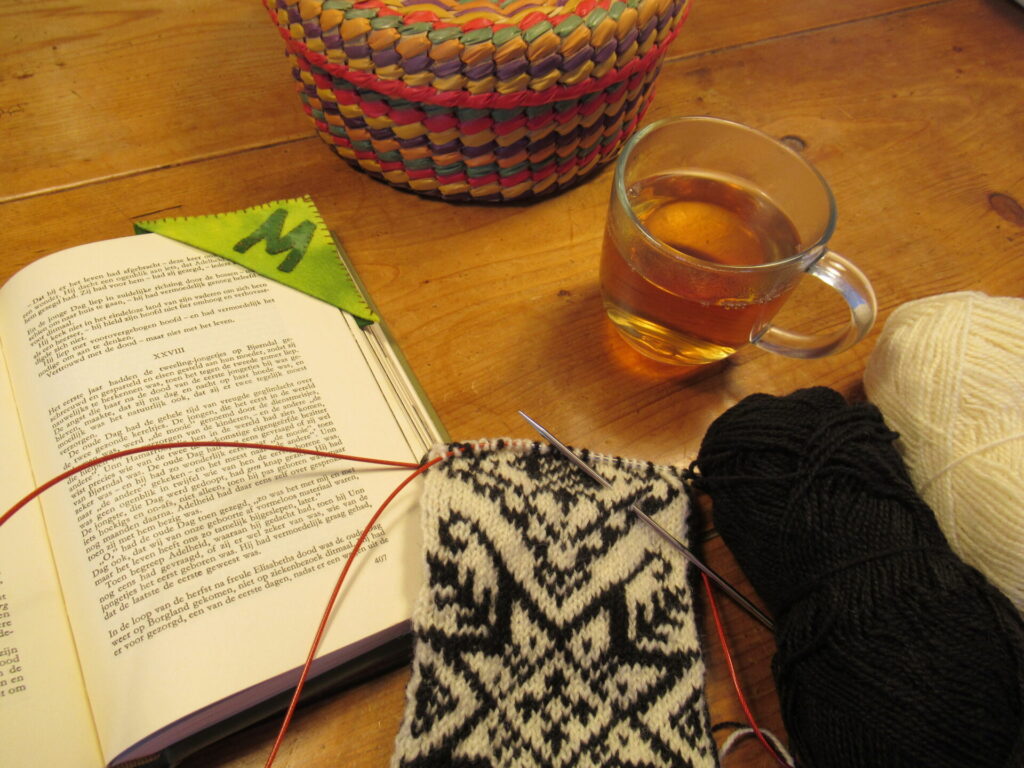
The lovely monogrammed felt book mark was a gift from my friend Froukje. She writes about making them in this blog post (scroll down a little).
Some people find the books slow going, but I think they are magnificent. It’s not just the development of Dag’s character that’s fascinating, but also the people around him, the glimpses we get of Norwegian society at the time, and the descriptions of everyday life and the landscape.
The copy I inherited is a Dutch translation, with photographs from a 1960 Austrian film based on the books as well as illustrations by Dutch artist Anton Pieck. The film pictures are so horrible that I’m thinking of tearing them out. But Pieck’s illustrations are fabulous – just look at how the smoke curls up from the chimney of this log cabin among the pine trees:
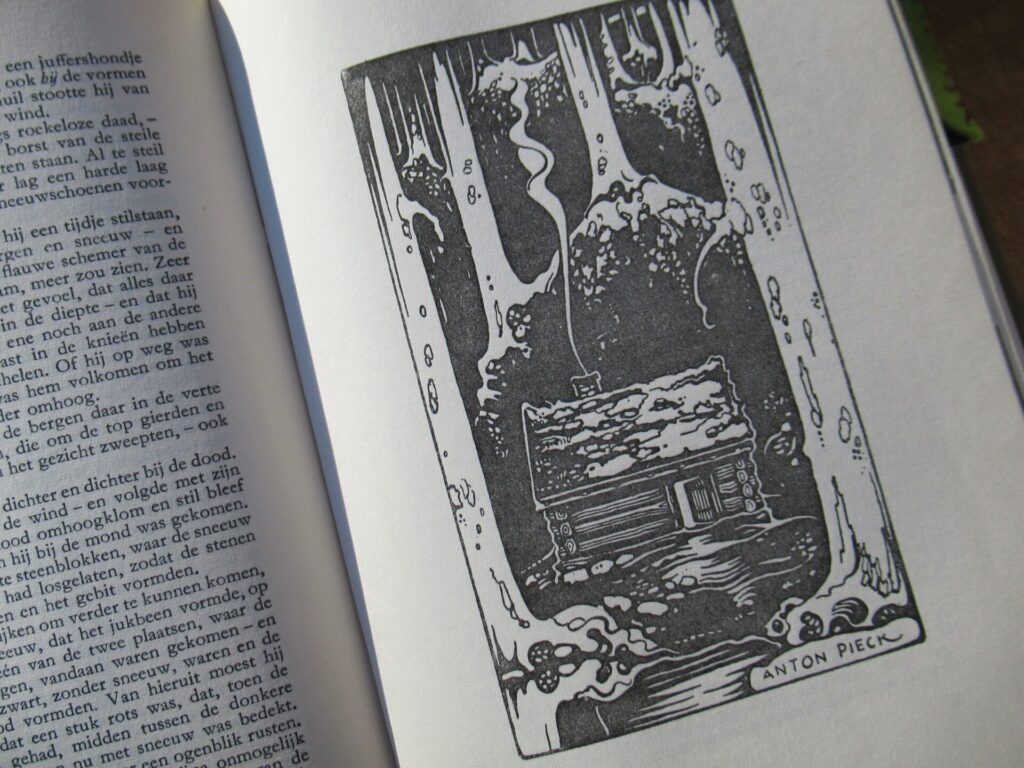
And see how he depicts the forest creatures that cause rumbling noises and landslides in the mountains dancing with the naked young beauties who lure people into steep and dangerous ravines with their song:
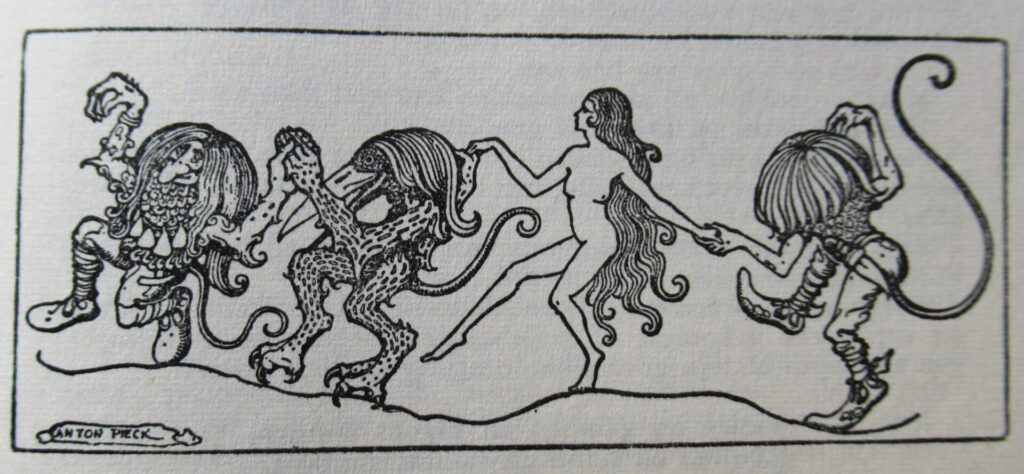
Seeing these pictures gave me the idea of visiting the Anton Pieck museum. It isn’t far away from us at all, but we’d never been there. So on the Monday before New Year’s eve we set off for Hattem. Unfortunately, I’m not allowed to show you any of the photographs I’ve taken inside. Bummer!
What I can do, is take you on a walk through this lovely town. Anton Pieck is best known for his nostalgic town scenes, and walking through Hattem’s old centre is like being inside some of his paintings (bar the cars and bicycles).
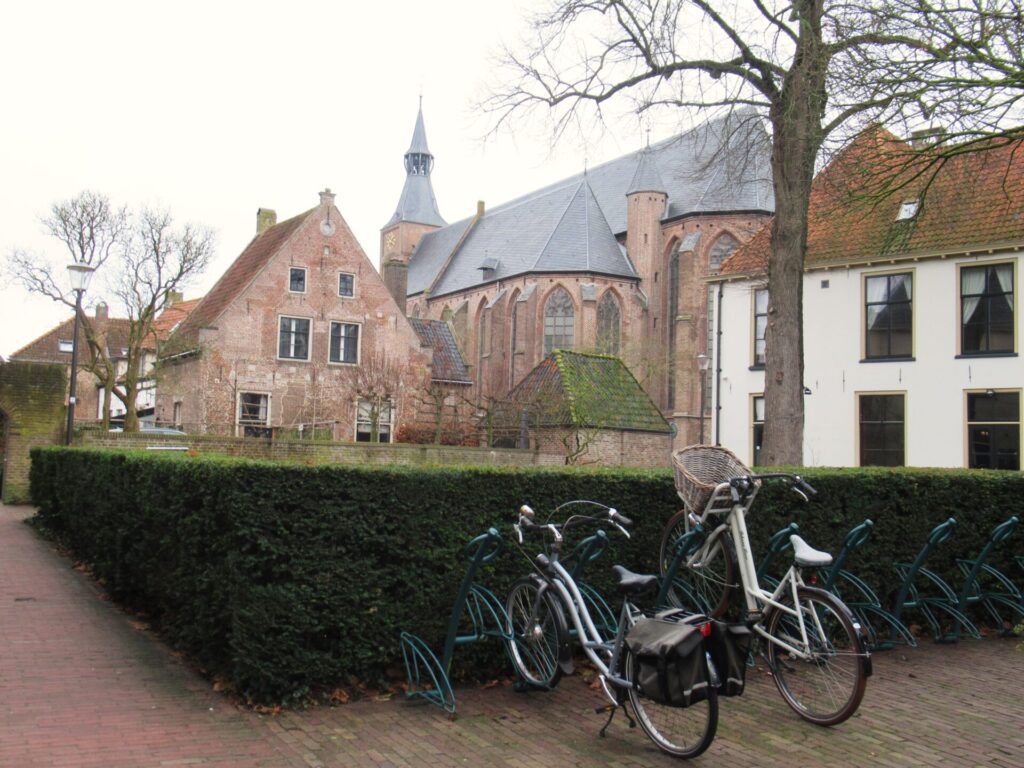
Behind the deep green yew hedge, there’s a communal herb garden where the inhabitants of Hattem can come and pick herbs for their meals and tisanes.
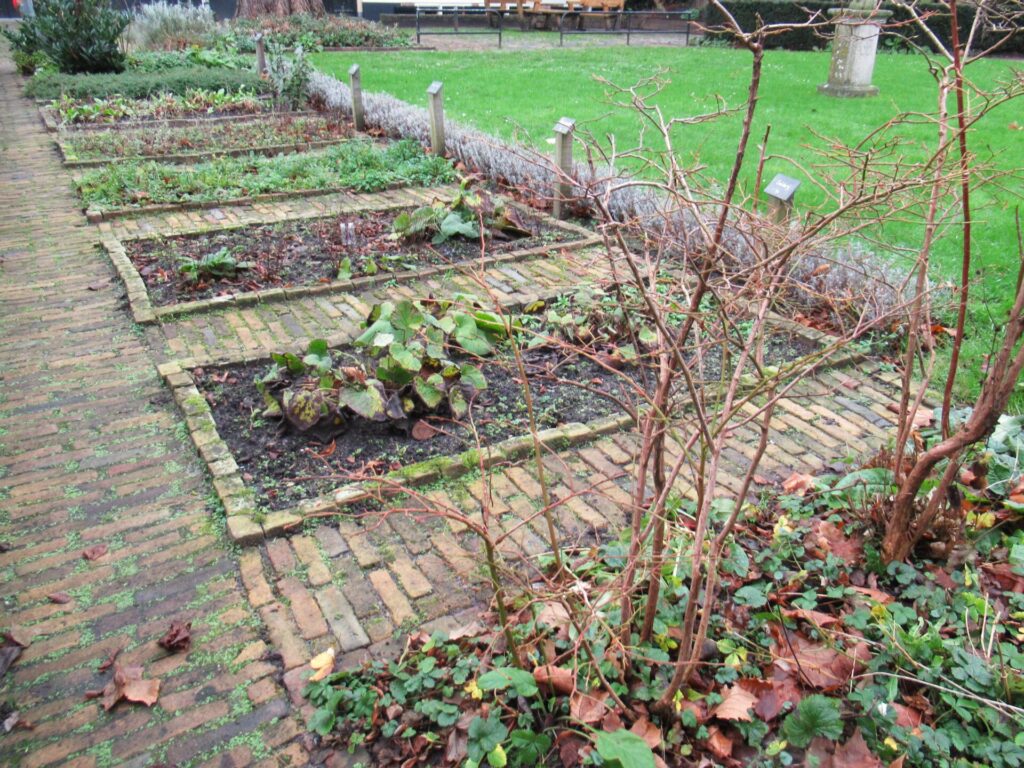
The square beside the Church is one of my favourite spots in the town. Even nicer in spring and summer with the potted plants flowering, but still lovely on a gloomy winter’s day.
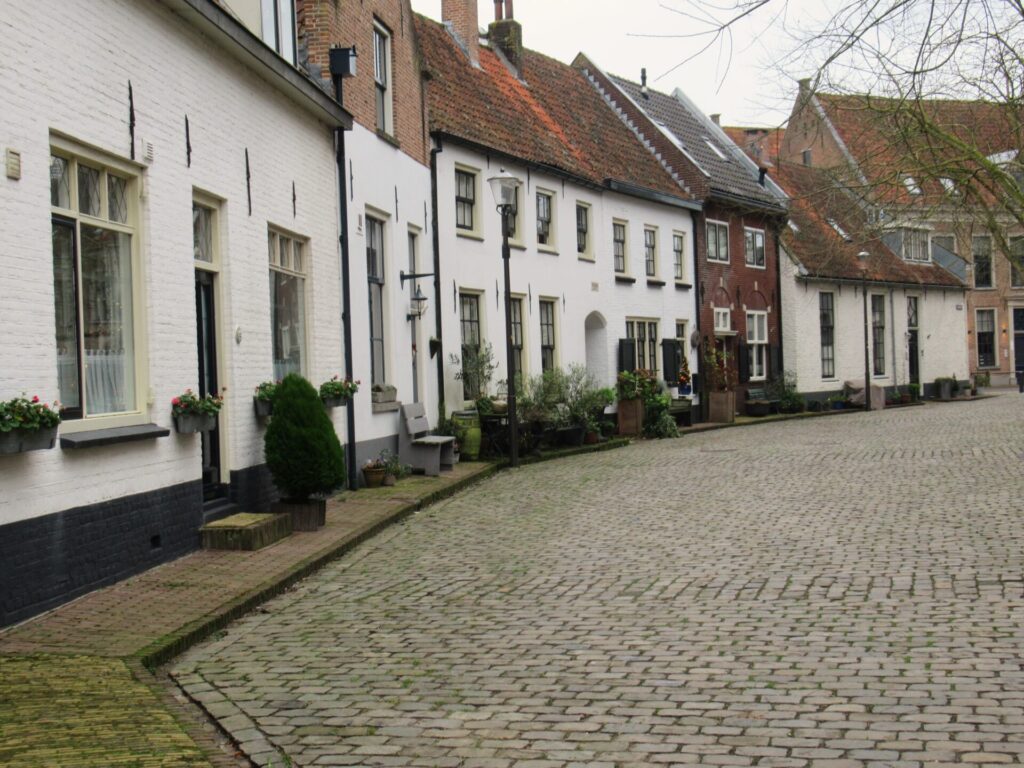
After a short walk we arrive at the Anton Pieck museum, with its cheerful blue door and shutters.
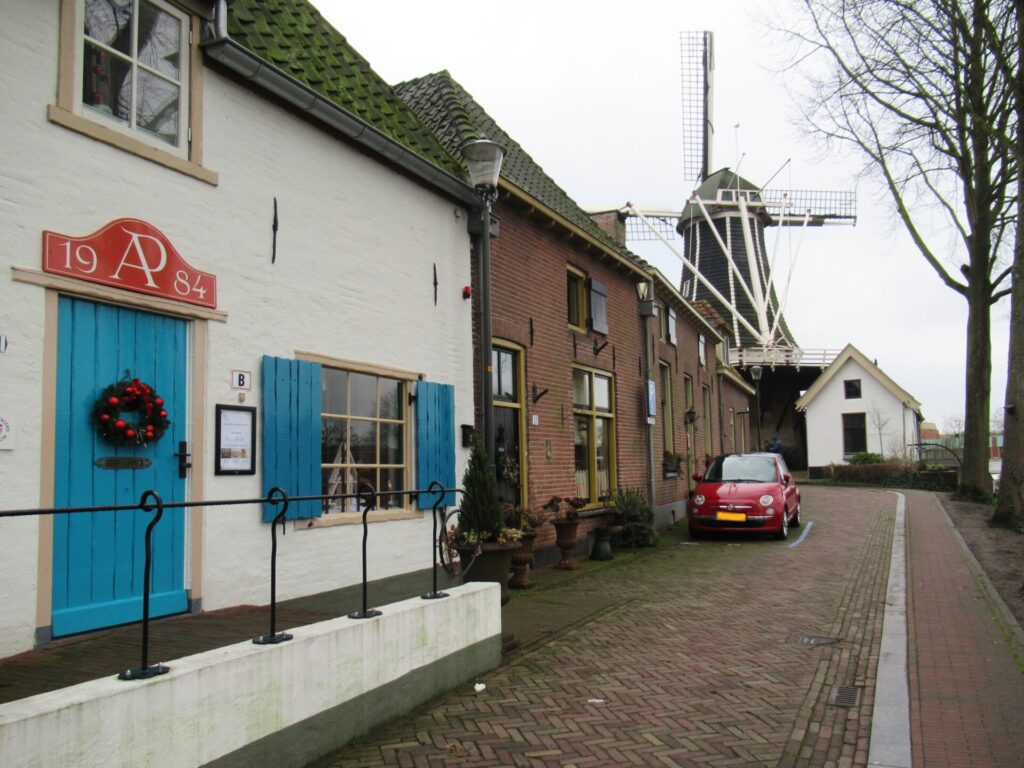
As I said, I can’t take you inside, but you can get an impression of Anton Pieck’s work from the Museum website and even better from this website dedicated to his work.
While Anton Pieck’s cobbled streets are always crowded with pedlars, women wearing shawls and carrying shopping baskets, children with hoops, cats, dogs, chimney sweeps etcetera, the streets in Hattem are deserted on the day of our visit.
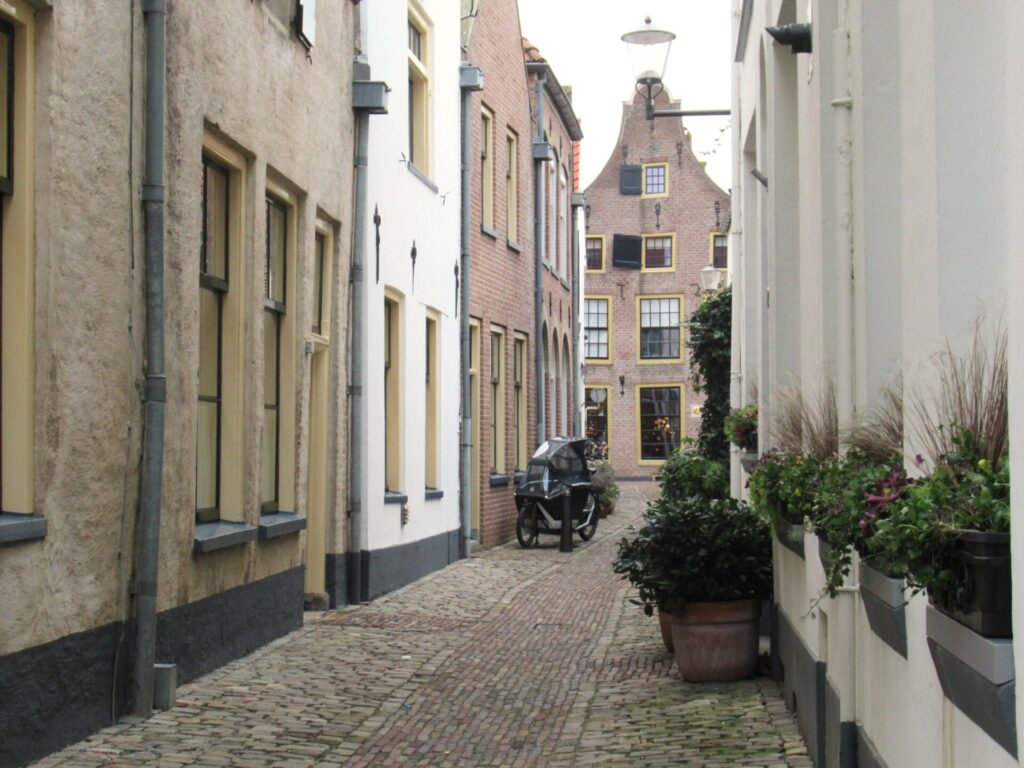
At the end of this alley, a house with a bell gable is called De Halve Maen:
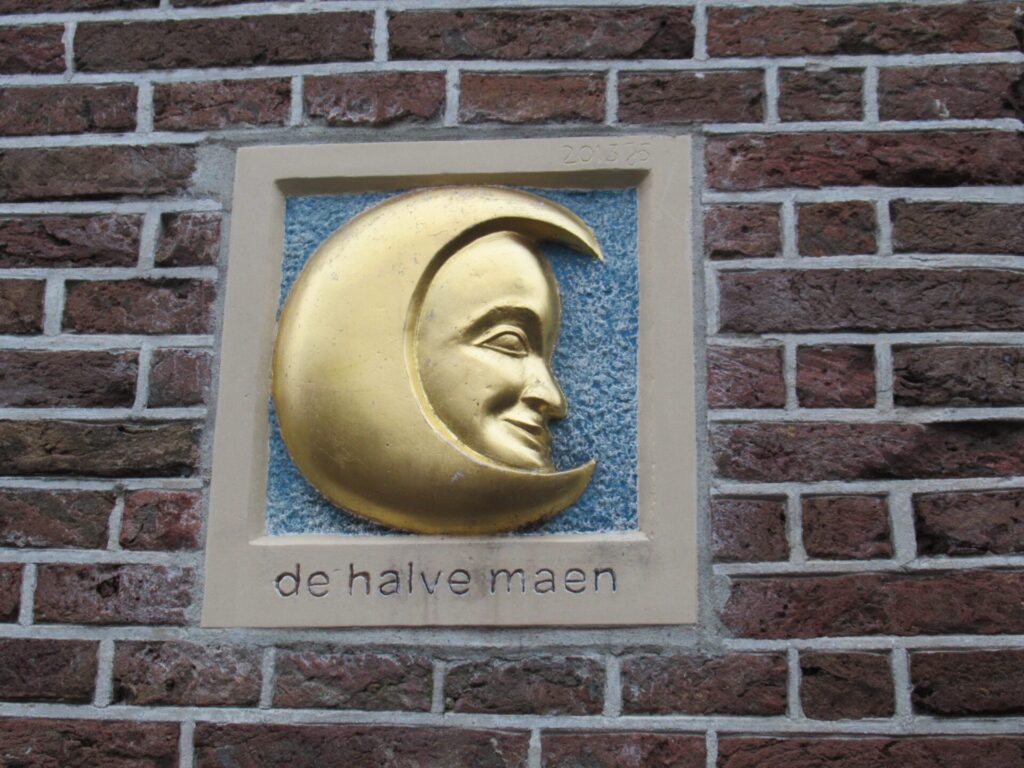
The wealthy merchant to whom this house once belonged may well have bought wood for his roof beams or furniture from a Norwegian trader like Dag Bjørndal, helping to fill up the trader’s intricately decorated coffers with silver.
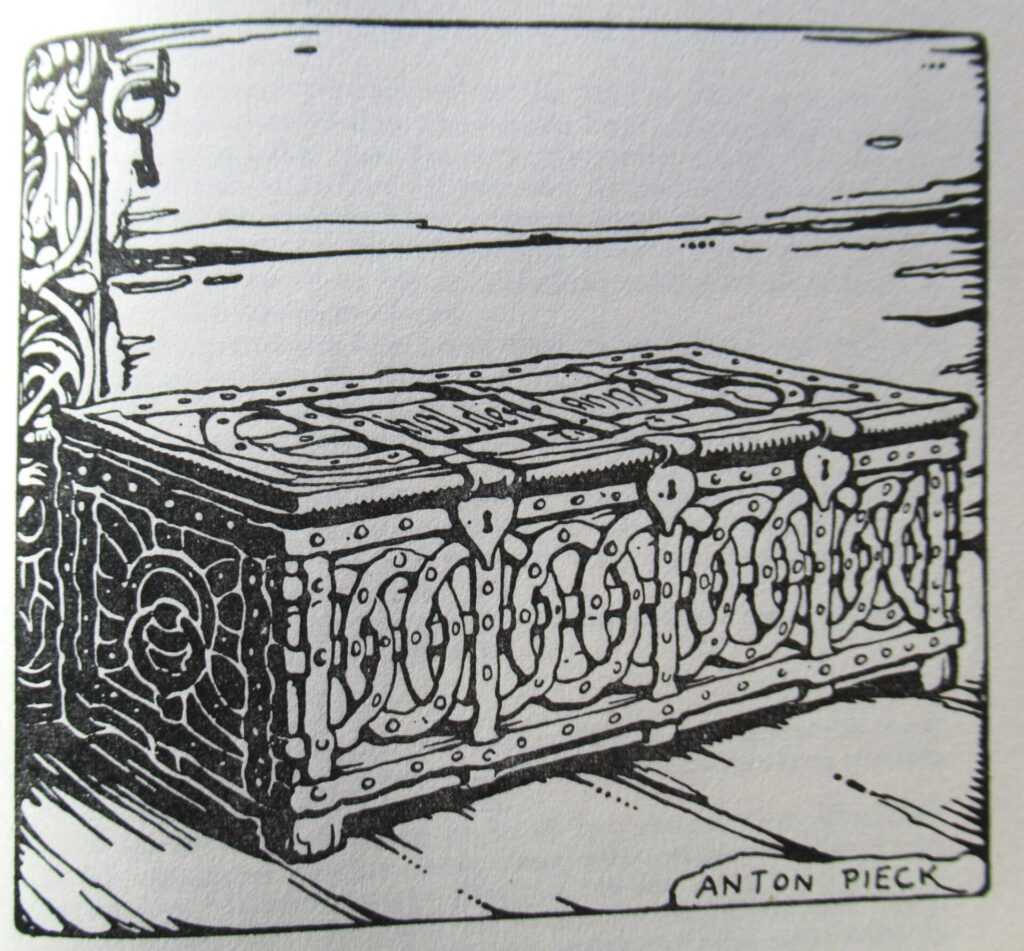
In his middle years Dag becomes more and more obsessed with filling his coffers and investing in real estate, but later on he mends his ways and says, ‘It is the money grabbing that has got the upper hand in our lives, and that makes that many people are struggling unnecessarily. A man must spread heart warmth around him if he wants to have peace, and that will benefit others as well.’ [Trygve Gulbranssen, Het geslacht Bjørndal, uitg. M.C. Stok, The Hague, date unknown, p. 529, my translation] If only more people came to that insight in their old age (or preferably earlier).
With Dag’s piece of wisdom, I’m leaving you for now. I hope to be back with some knitting next week. Take care!
